The A∴A∴ Robe Design
Do what thou wilt shall be the whole of the Law.
The magical robe is an important part of the A∴A∴ system, a characteristic feature or insignia of each Grade. Although it is included as a part of the Tasks in Liber Collegii Sancti, Crowley never released an official instruction on robes, and there is no unanimous robe design across the many A∴A∴ claimant groups.
We will review the most well-known designs and some atypical forms.
The Robe as a Magical Tool #
From Liber ABA Part II Chapter XII:
The Robe of the Magician may be varied according to his grade and the nature of his working.
There are two principal Robes, the white and the black; of these the black is more important than the white, for the white has no hood. These Robes may be varied by the addition of various symbols, but in any case the shape of the Robe is a Tau.
[…]
The Robe is that which conceals, and which protects the Magician from the elements; it is the silence and secrecy with which he works, the hiding of himself in the occult life of Magick and Meditation. This is the “going away into the wilderness” which we find in the lives of all men of the highest types of greatness. And it is also the withdrawing of one’s self from life as such.
In another sense it is the “Aura” of the Magician, that invisible egg or sheath which surrounds him. This “Aura” must be shining, elastic, impenetrable, even by the light, that is, by any partial light that comes from one side.
The only light of the Magician is from the Lamp which hangs above his head, as he stands in the centre of the Circle, and the Robe, being open at the neck, opposes no obstacles to the passage of this light. And being open, and very wide open, at the bottom, it permits that light to pass and illumine them that sit in darkness and in the shadow of death.
The Robe in A∴A∴ Reception and Advancement #
Although in The Task of a Probationer the robe is optional (“if he will, shall then procure the robe of a Probationer”), there is a note included in a privately published edition of Liber Causae from 1910 that says otherwise:
This copy is lent to the correspondent on the distinct understanding that he will return it within Two hours of its receipt, with a definite answer Yes or No as to whether he will proceed to take the obligation of a Probationer.
The robe of a Probationer should be obtained from Mr. W. Northam, 9, Henrietta Street, Covent Garden, London, who charges Five Pounds for it.
The cost of the Book is One Guinea, and must be paid at the time of reception to the Neophyte admitting.
The admission is not valid unless the Neophyte hand the robe to the Probationer with his own hand; or in the case of correspondence through post — a method which is not to be employed without grave reason — write formally “I bestow the robe upon you.”
This rule never went public, and later it was relaxed in Liber Collegii Sancti, where it is stated that the Probationer doesn’t have to pay for the First Volume of the Book and the Robe is optional, while that is not true for the Neophyte: he must obtain the robe and pay for one guinea for the Second Volume of the Book and one guinea for Liber Collegii Sancti itself (the portfolio of Class D publications):
Let him read through this note of his office, and sign it, paying the sum of One Guinea for Liber VII which will be given him on his initiation, and One Guinea for this Portfolio of Class D publications, B - G. Let him obtain the robe of a Neophyte, and entrust the same to the care of his Neophyte. (Liber Collegii Sancti)
Since the costs of printing and binding are very cheap nowadays, usually the student acquire his own copy from his preferred source or the instructor pays for it.
William Northam Robemaker #
But where would a member of A∴A∴ acquire such robe? Across multiple issues of The Equinox, the official periodical of A∴A∴, Mr. W. Northam was announced as the official robemaker:
MR. NORTHAM begs to announce that he has been entrusted with the manufacture of all robes and other ceremonial apparel of members of the A∴A∴ and its adepts and aspirants.
The advertising includes an abstract description of each robe and its function. We will discuss each of them later while reviewing each Grade. However, their use is not restricted to a given Grade:
Any of time robes may be worn by a person of whatever grade on appropriate occasions.
The William Northam company is still on business, they describe themselves as “robemakers & photographers”. We contacted them, but unfortunately they no longer produce these robes — and haven’t produced for a long, long time.
The Multiple Designs #
Considering we can no longer obtain the William Northam’s official design, we must rely on other sources. There are two main designs of A∴A∴ robes suggested by Crowley:
1. A sketch was drawn by Crowley and sent to Fuller in 1909 (hereon called Crowley / Fuller design). This is the base for a modern instruction on robes called Liber Vesta vel פרכת (hereon called Outer College design), published in 1996 in Commentaries on the Holy Books & Other Papers. However, they have differences, and we will consider them apart from each other.
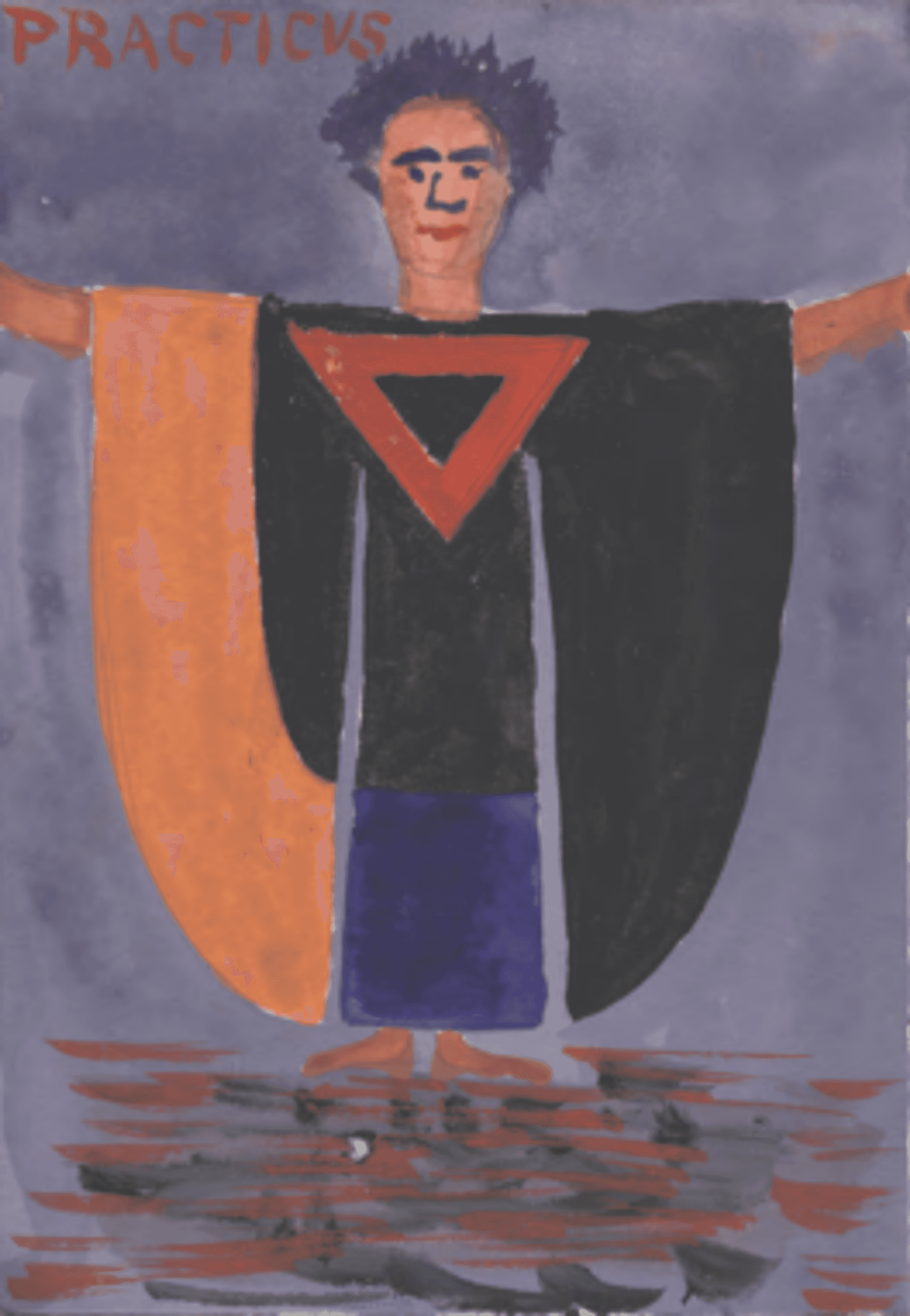
2. A small note typed by Israel Regardie while he served as Aleister Crowley’s secretary. That note was copied by James A. Eshelman in 1980 and published in his The Mystical and Magical System of the A∴A∴ (hereon called Crowley / Regardie design). This design mostly matches the pictures published in books and newspapers around the time A∴A∴ started to accept members.
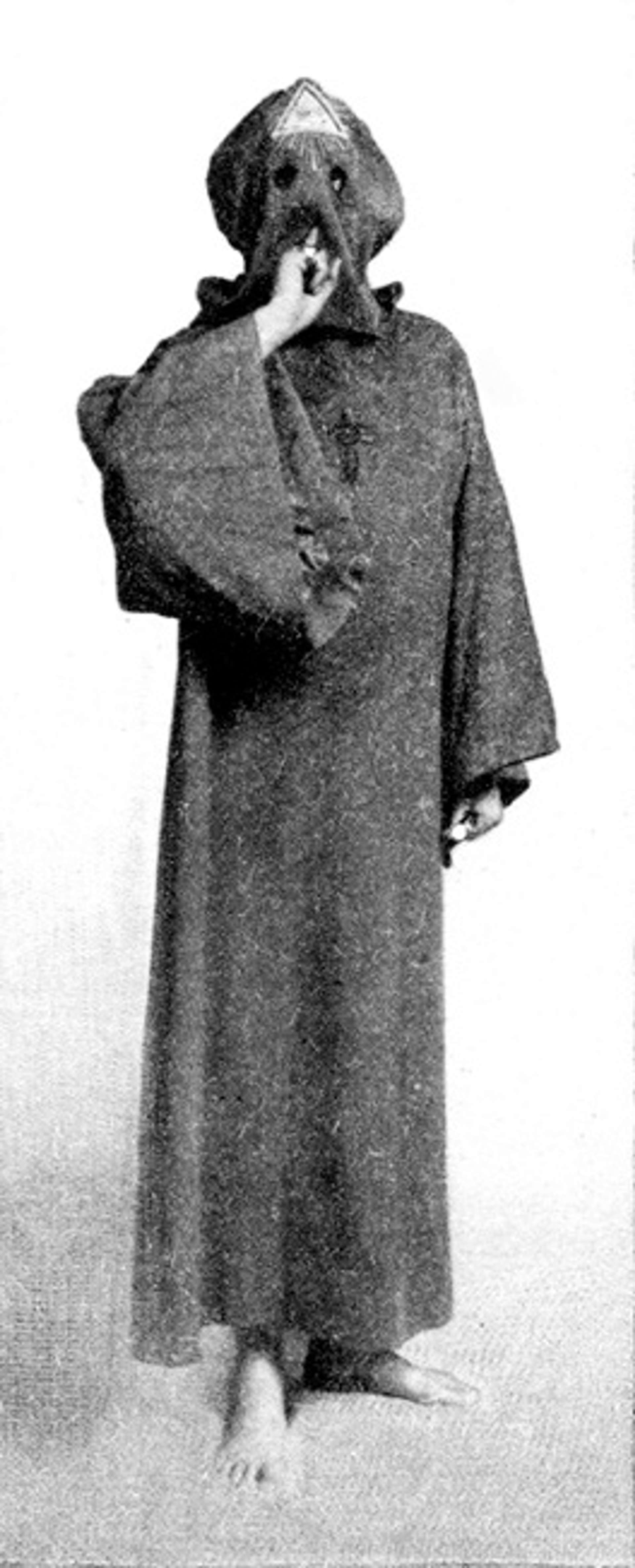
Although these are the most popular robe designs across A∴A∴ claimant groups, there are other forms suggested by Crowley. For example, the black Probationer robe described in Magick Without Tears and the golden-trimmed black Neophyte robe painted in Cefalù.
Let’s describe and analyze the existant designs, Grade by Grade.
Probationer 0○=0□ #
No. 0. PROBATIONER’S ROBE £5 0 0
[No.] 1. [PROBATIONER’S ROBE] superior quality [£]7 0 0The Probationer’s robe is fitted for performance of all general Invocations and especially for the I[nvocation] of the H[oly] G[uardian] A[ngel]; a white and gold nemmes may be worn. These robes may also be worn by Assistant Magi in all composite rituals of the White. (William Northam’s ad in The Equinox)
0=0 White Tau-robe, no hood. Gold braid along bottom hem, cuffs, neck. Pentagram on front, hexagram on back. (Regardie’s note)
[…] IF HE WILL, shall then procure the robe of a Probationer; shall choose with deep forethought and intense solemnity a motto. On reception, he shall receive the robe […] (Liber Collegii Sancti)
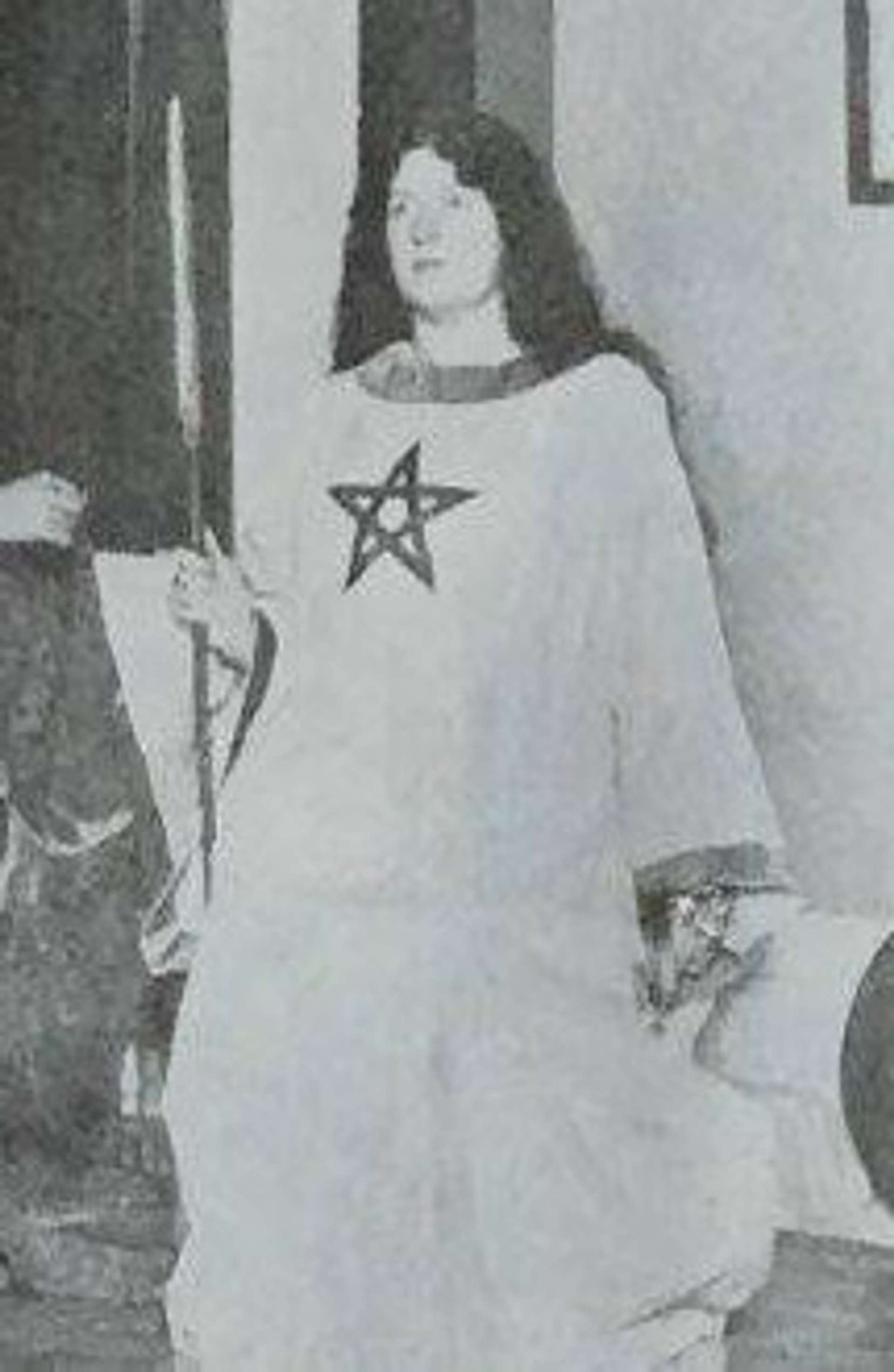 | 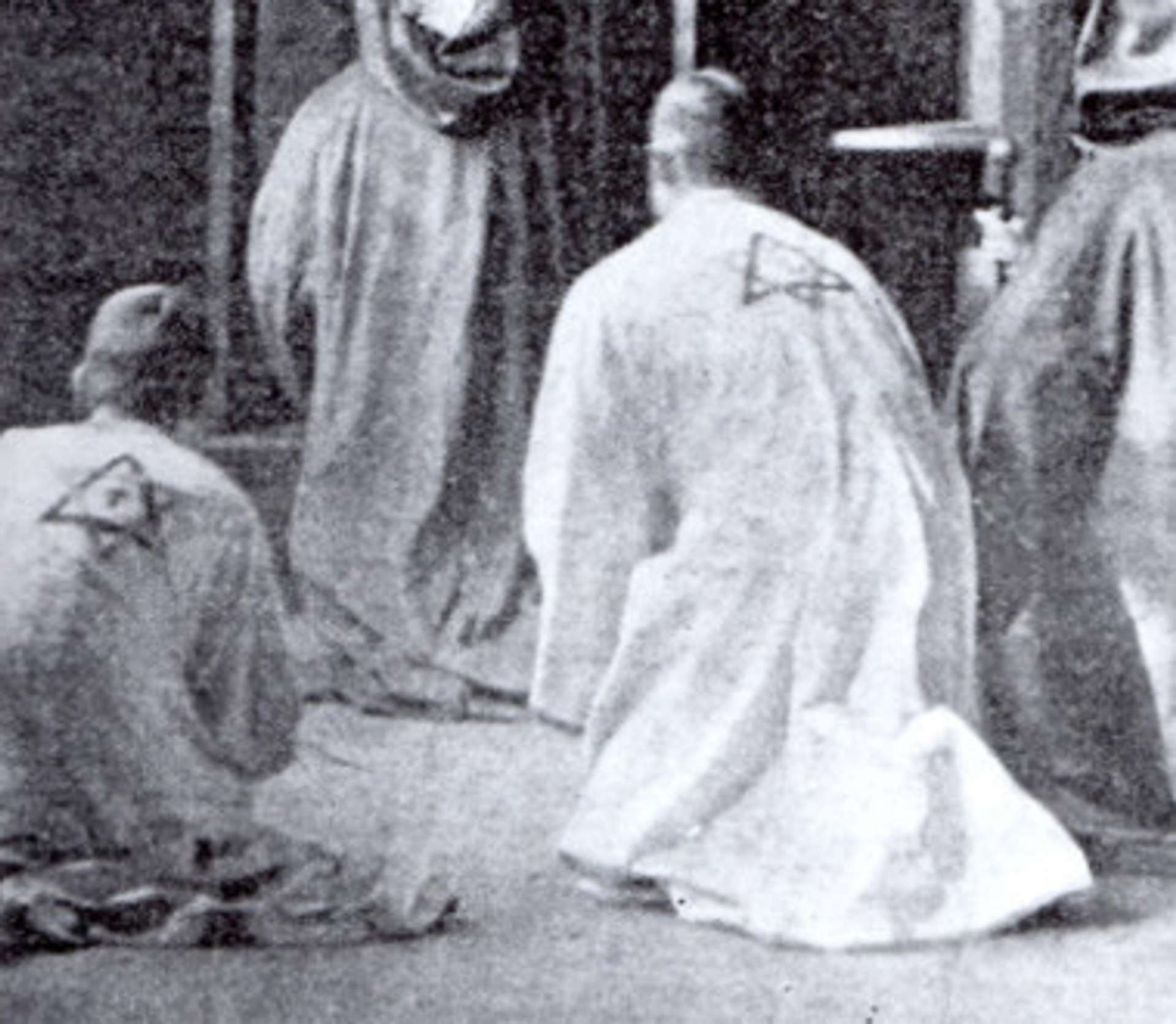 |
In the pictures above, people are wearing the Probationer Robe in the presentation of the Rites of Saturn, one of the seven parts of The Rites of Eleusis.
We can see that the descending triangle is very bright, and the trims are very dark. Using a computer, if we change a red and blue hexagram to grayscale, we will see that the blue triangle has a darker grey shade, and we may presume that the descending triangle is red and the ascending one is blue.
However, computers do not convert colorful images to grayscale in the same way as old photoes converted nature colors to black & white. According to Walters and Davis (1921):
Photographic plates and films owe their sensitiveness to light to the silver bromide embedded in the gelatine with which they are coated. Silver bromide as found in the ordinary plate […] are affected only by blue, violet, and ultra-violet light. Green, yellow, orange, and red have little or no effect, so that a photograph made on such a plate portrays blue, violet, and ultra-violet (which do not affect the eye) as white; while green (to which the eye is most sensitive), yellow, orange, and red are portrayed as black.
That explains the golden cuffs looking so dark and the blue triangle looking so bright in the photos. Thus, those photos match the description of the hexagram given in the 8th Æthyr of The Vision and the Voice:
And even if he be of higher rank than a Probationer, he shall yet wear the robe of the Probationer, for the star of flame showeth forth Ra Hoor Khuit openly upon the breast, and secretly the blue triangle that descendeth is Nuit, and the red triangle that ascendeth is Hadit. And I am the golden Tau in the midst of their marriage.
Also, we may consider the description given in the romance Moonchild:
Behind each chair stood one of the Probationers of the Order in a white robe, on whose breast was a scarlet Pentagram. Neck, sleeves, and hem were trimmed with gold.
Although Crowley didn’t draw the Probationer robe in the sketches he sent to Fuller, Liber Vesta (1998) suggests the same approach:
The Probationer shall wear a Robe of White Linen or Wool or Silk in the Shape of the Tau, trimmed in Gold at the neck, sleeves and hem. On the front of the Robe in Scarlet shall be the Upright Pentagram; on the back, the Hexagram of Nature with the golden Tau in the midst, for “the blue triangle that descendeth is Nuit, and the red triangle that ascendeth is Hadit.” There is no Hood.
However, in a later edition of Liber Vesta released by J. Daniel Gunther in his The Angel & The Abyss: The Inward Journey, Books II & III, 2014, he includes photos of a woman wearing a Probationer robe where the golden tau inside the hexagram is reversed, and the pentagram is interlocked.
Here is a rendering of the second design of the Outer College:
| Outer College front: | Outer College back: |
|---|---|
 |  |
Here is a rendering of the classic robe in colors:
| Classic front: | Classic back: |
|---|---|
 |  |
Other Variations #
Another very different design is given by Crowley himself in Magick Without Tears, Chapter XXIII:
Now, as to your personal accoutrements, Robe, Lamen, Sandals and the like, The Book of the Law has most thoughtfully simplified matters for us. “I charge you earnestly to come before me in a single robe, and covered with a rich headdress.” (AL I, 61) The Robe may well be in the form of the Tau Cross; i.e. expanding from axilla to ankle, and from shoulder to—whatever you call the place where your hands come out. (Shape well shown in the illustration Magick face p. 360). You being a Probationer, plain black is correct; and the Unicursal Hexagram might be embroidered, or “applique” (is it? I mean “stuck on”), upon the breast. The best head-dress is the Nemyss: I cannot trust myself to describe how to make one, but there are any number of models in the British Museum, on in any Illustrated Hieroglyphic text. The Sphinx wears one, and there is a photograph, showing the shape and structure very clearly, in the Equinox I, 1, frontispiece to Supplement. You can easily make one yourself out of silk; broad black-and-white stripes is a pleasing design. Avoid “artistic” complexities.
A similar design has been adopted by some of Marcelo Motta’s students. The unicursal hexagram was changed, following the design of the hexagram in the back of the white Probationer robe, however, with colors of the Holy Hexagram as described in Chapter 69 of The Book of Lies:
In the ordinary Hexagram, the Hexagram of nature, the red triangle is upwards, like fire, and the blue triangle downwards, like water. In the magical hexagram this is reversed; the descending red triangle is that of Horus, a sign specially revealed by him personally, at the Equinox of the Gods. (It is the flame descending upon the altar, and licking up the burnt offering.) The blue triangle represents the aspiration, since blue is the colour of devotion, and the triangle, kinetically considered, is the symbol of directed force.
| Crowley’s, from Magick Without Tears: | Motta’s, according to some of his disciples: |
|---|---|
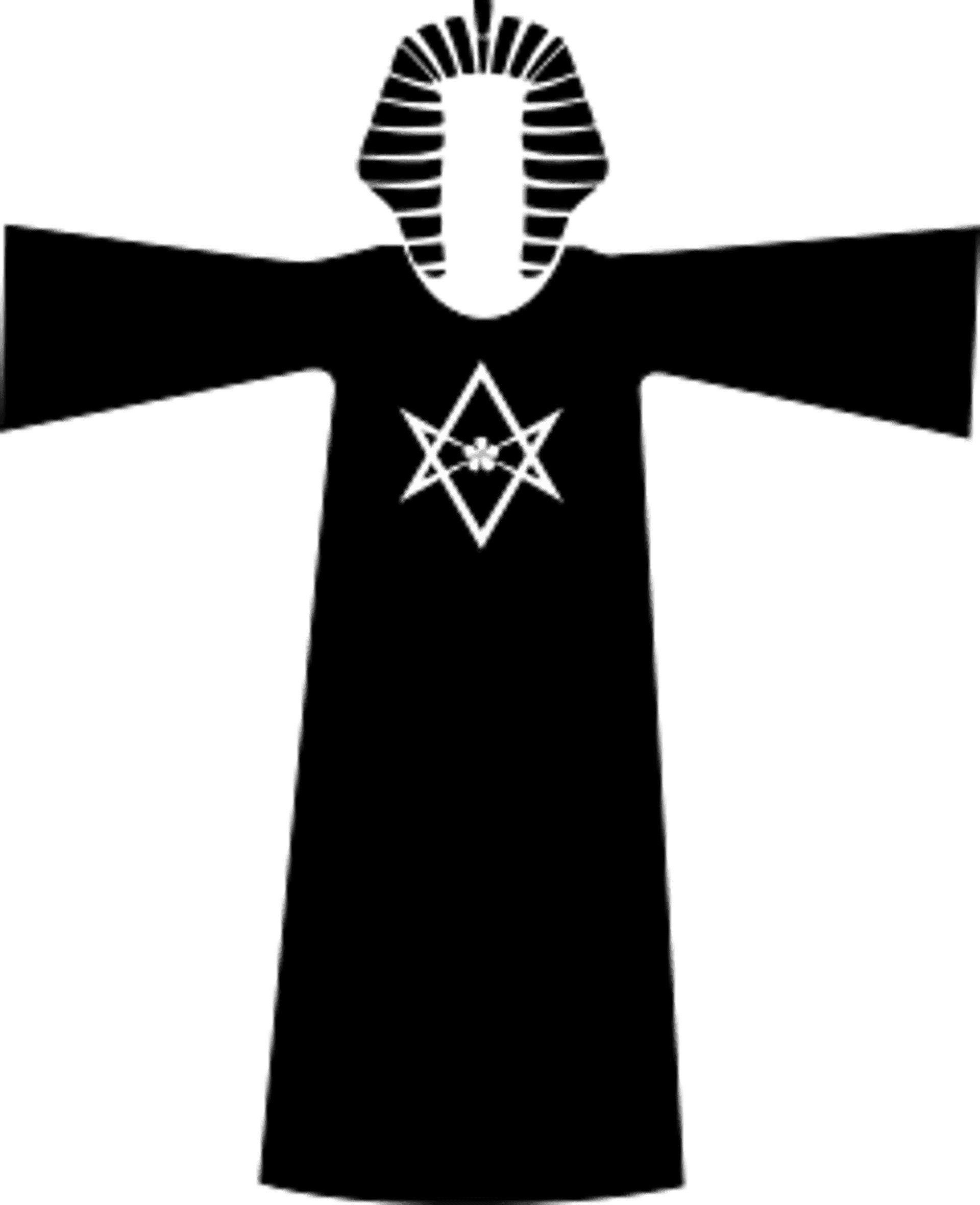 | 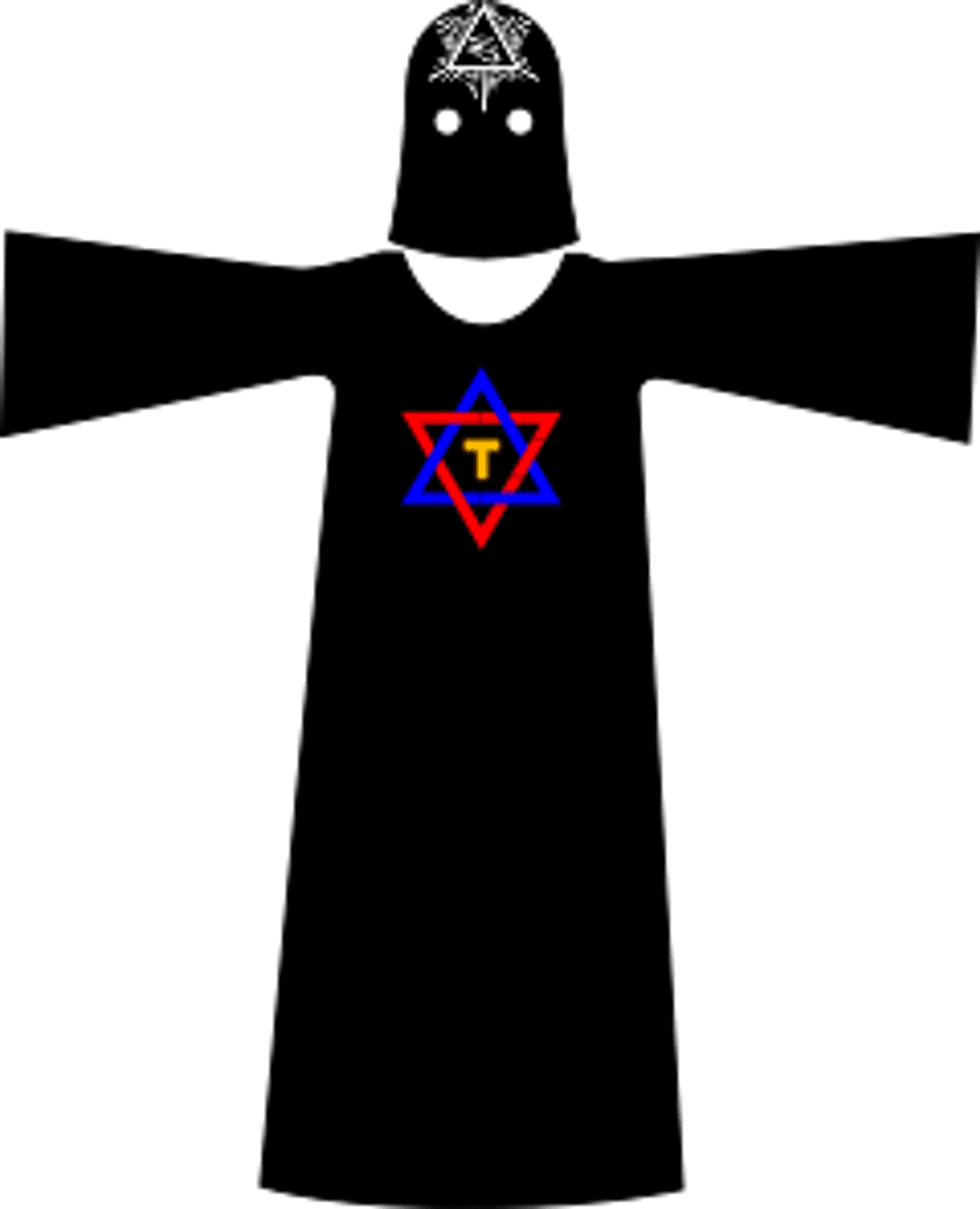 |
Neophyte 1○=10□ #
[No.] 2. NEOPHYTE’S [£]6 0 0
The Neophyte’s robe is fitted for all elemental operations. A black and gold nemmes may be worn. Assistant Magi may wear these in all composite rituals of the Black. (William Northam’s ad in The Equinox)
1=10 Black with hood, no insignia. (Regardie’s note)
Let him obtain the robe of a Neophyte, and entrust the same to the care of his Neophyte. (Liber Collegii Sancti)
| Crowley/Fuller: | Crowley/Regardie: | Outer College: |
|---|---|---|
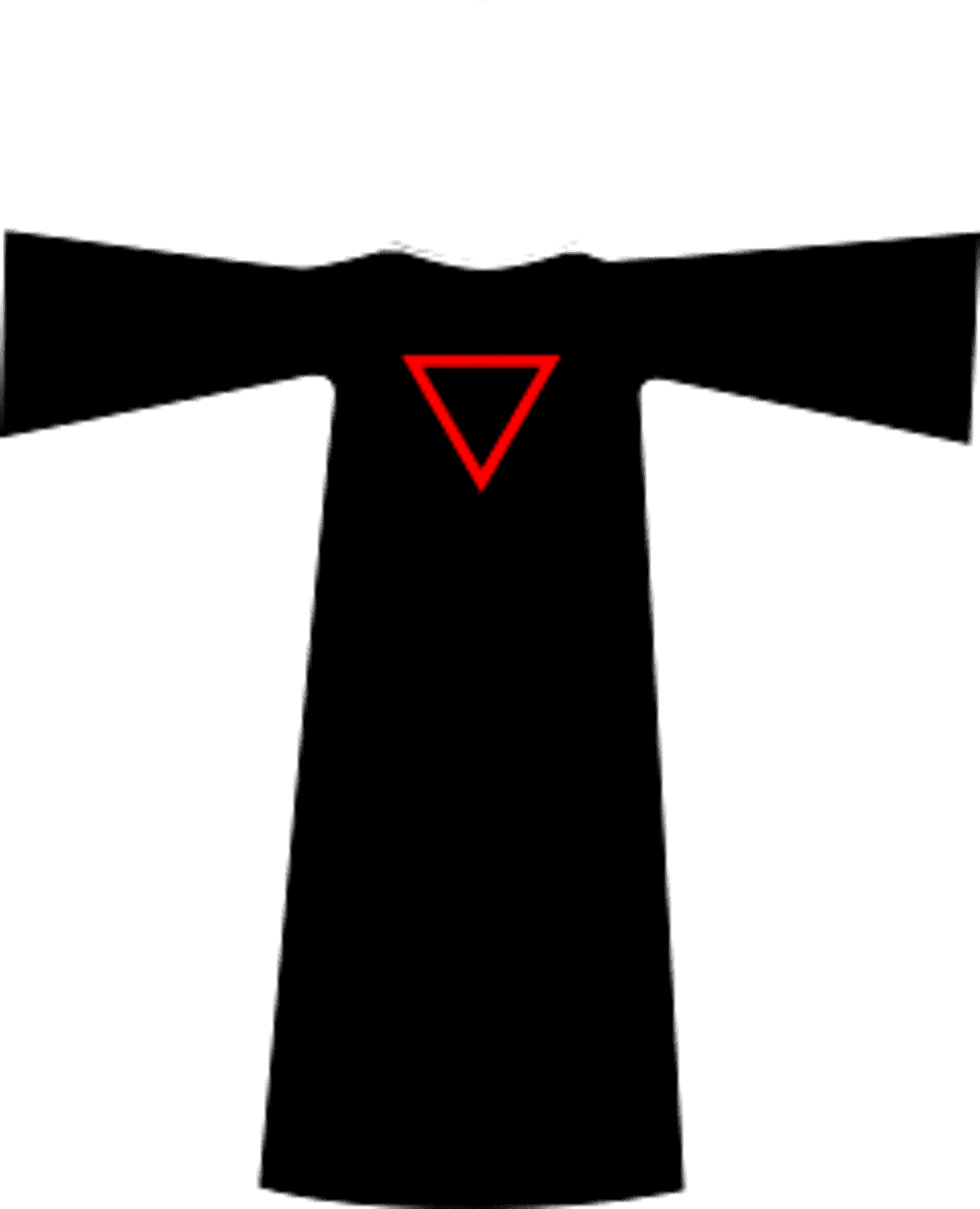 |  | 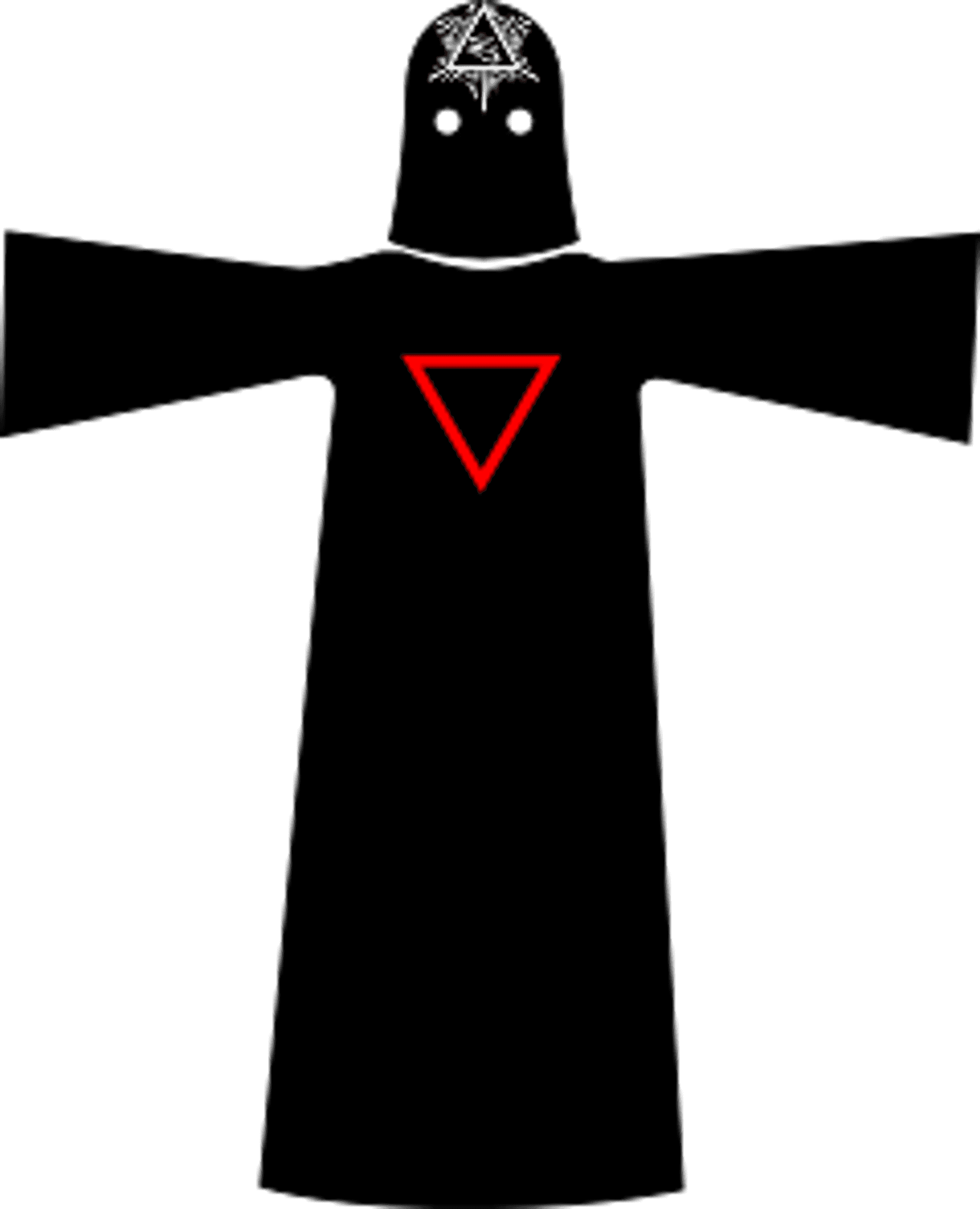 |
| Crowley/Regardie hood: | Outer College hood: |
|---|---|
 | 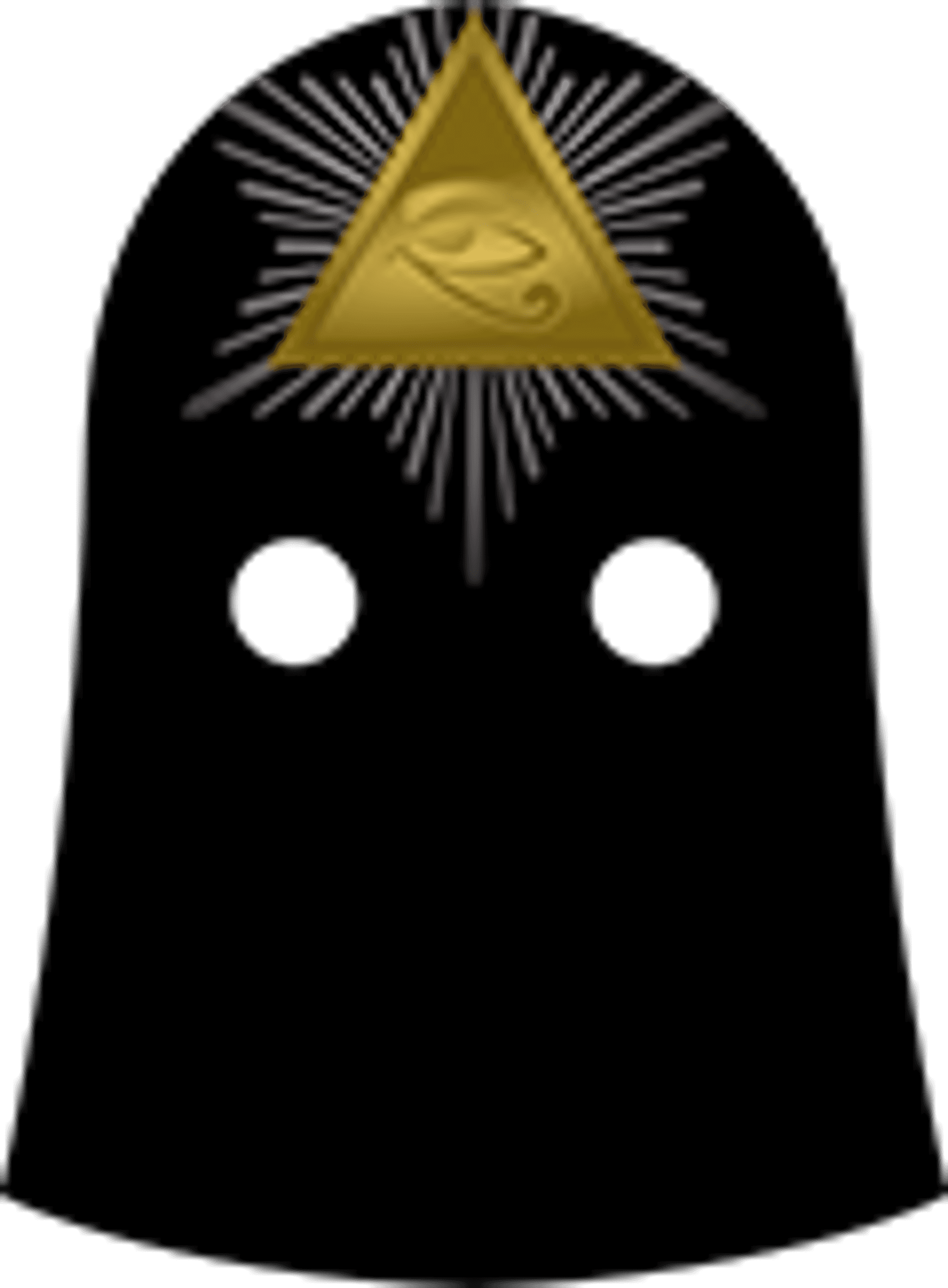 |
Other Variations #
Aleister Crowley painted Frater Progradior (Frank Bennett) as a Neophyte 1○=10□:
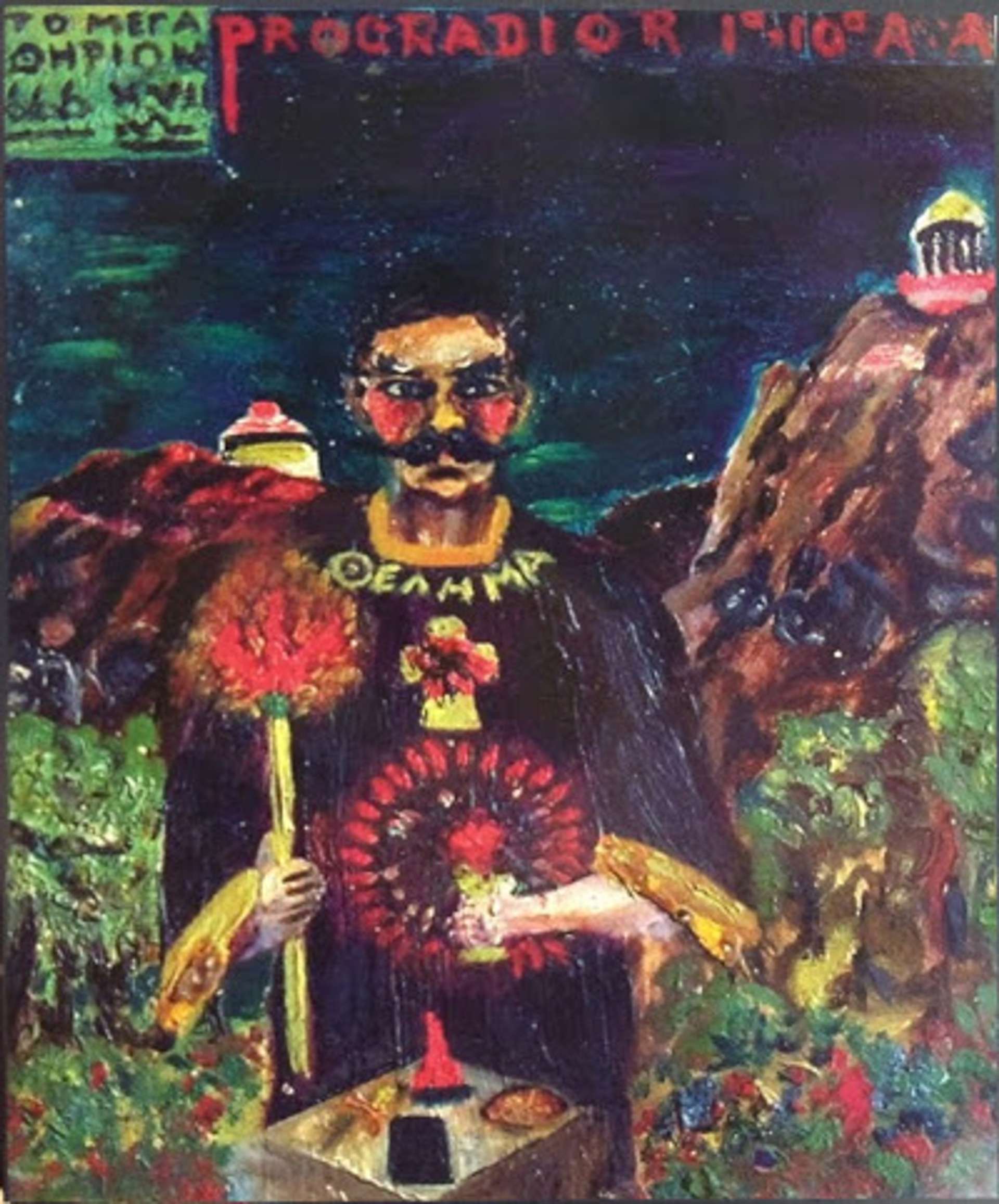
The design of his robe does not match either description of the Neophyte robe, however, it partially fits what has been described by Jean Fuller in his biography of Victor Neuburg (one of the earliest members of A∴A∴), concerning the later’s initiation in what seems an adapted form of the old Hermetic Order of the Golden Dawn (the Ritual Throa was performed days later, so this is not the admission of an A∴A∴ Neophyte):
Probably in an ante-room to that in which the initiation was to take place, a black robe was put upon him. This was almost certainly the same one that had been worn by Crowley at his admission as a Probationer [sic], and Victor would have been told this for his fortification. It was like a cloak except for wide sleeves edged with gold, and had a hood with eye-holes which could be brought up right over the head.
Zelator 2○=9□ #
[No.] 3. ZELATOR Symbol added to No. 2 [£]1 0 0
The Zelator’s robe is fitted for all rituals involving I O, and for the infernal rites of Luna. In the former case an Uraeus crown and purple nemmes, in the latter a silver nemmes, should be worn. (William Northam’s ad in The Equinox)
2=9 Add silver eye in triangle to hood. (Regardie’s note)
Let him cause the necessary addition to be made to his Neophyte’s robe, and entrust the same to the care of his Zelator. (Liber Collegii Sancti)
| Crowley/Fuller: | Crowley/Regardie: | Outer College: |
|---|---|---|
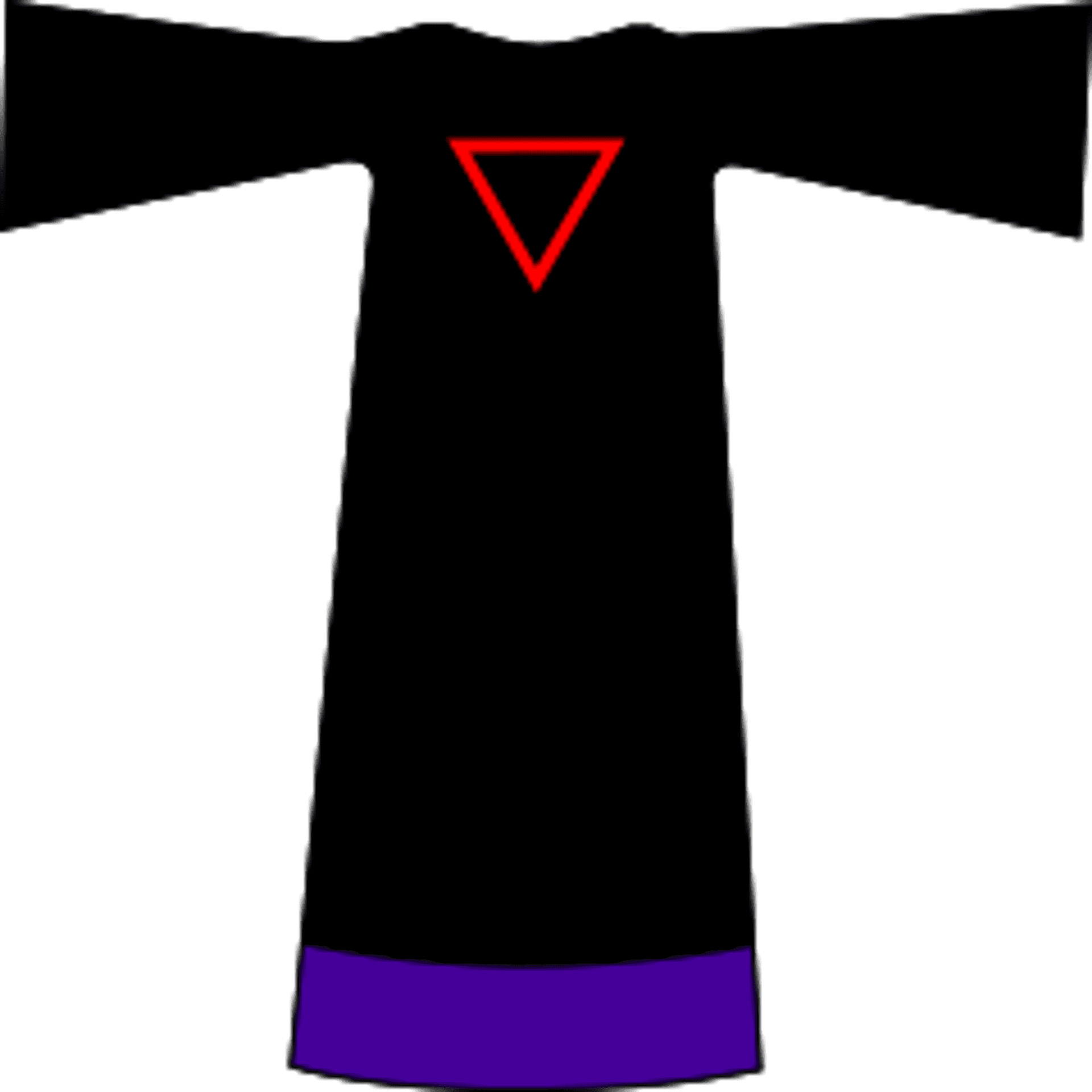 | 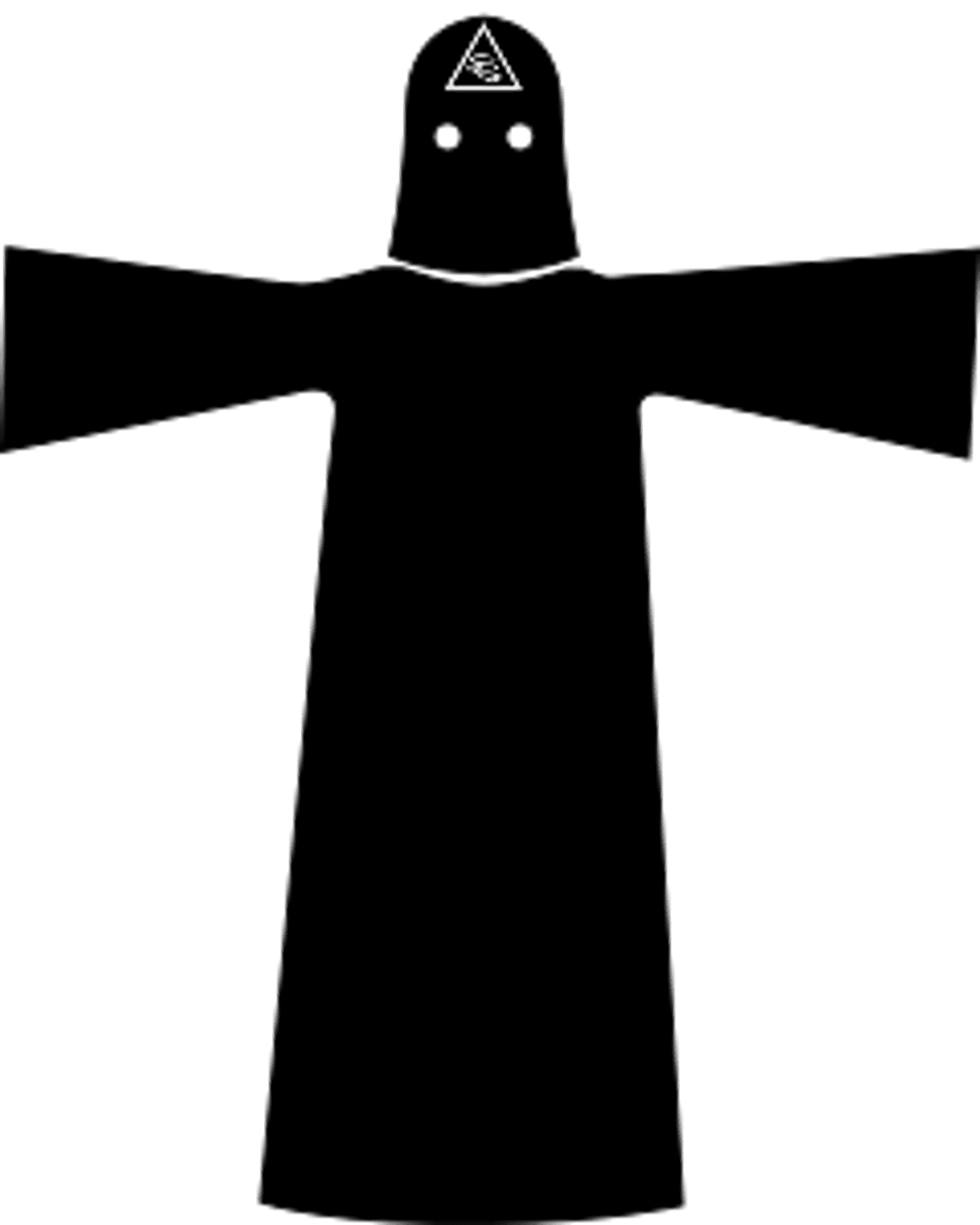 | 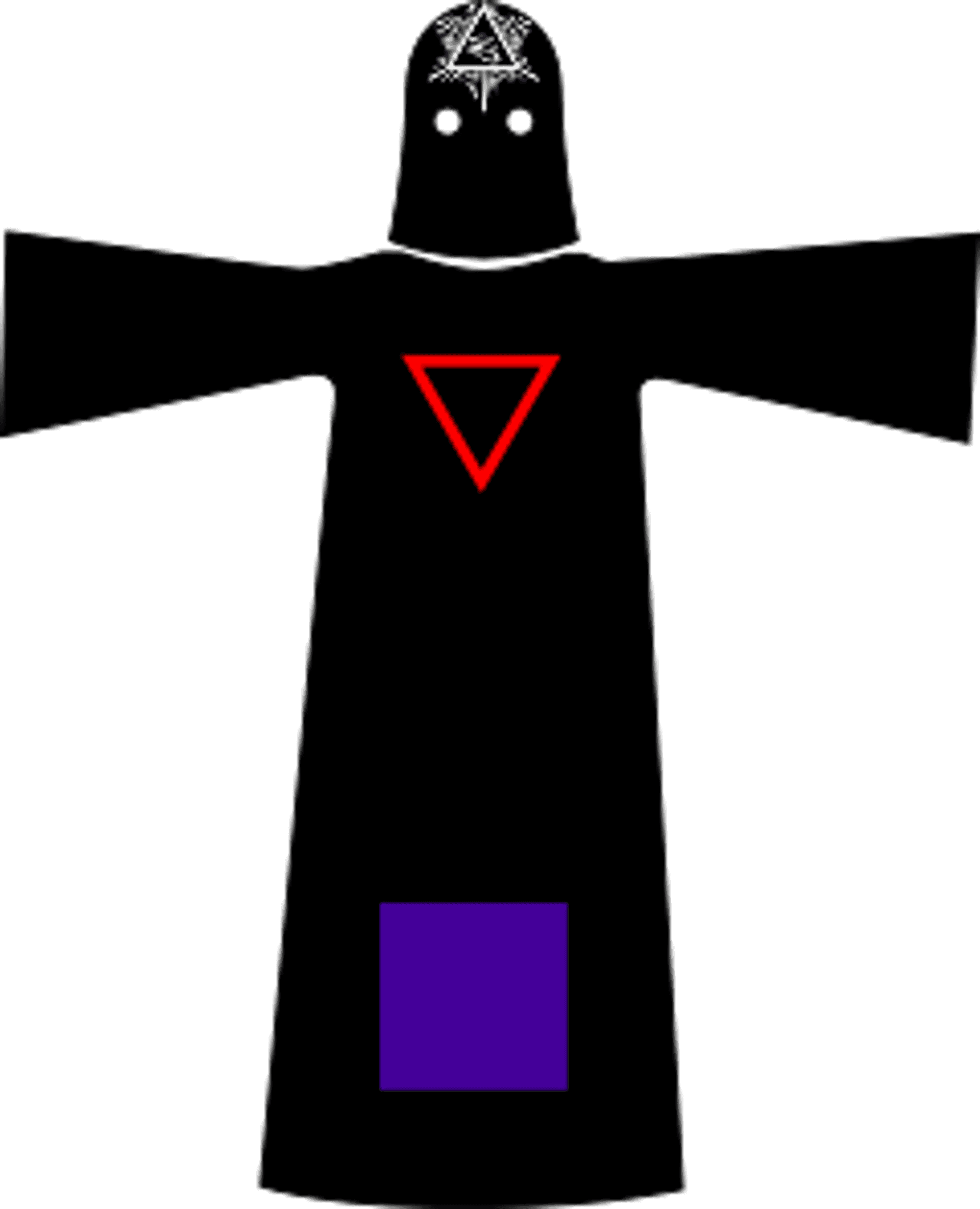 |
| Adds violet sash to the bottom | Adds silver eye in the triangle to the hood | Adds violet square to the bottom |
| Crowley/Regardie hood: | Outer College hood: |
|---|---|
 |  |
Practicus 3○=8□ #
[No.] 4. PRACTICUS [Symbol added to No.] 3 [£]1 0 0
The Practicus’ robe is fitted for all rituals involving I I, and for the rites of Mercury. In the former case an Uraeus crown and green nemmes, in the latter a nemyss of shot silk, should be worn. (William Northam’s ad in The Equinox)
3=8 Add silver hexagram of 48 rays to hood. (Regardie’s note)
Let him cause the necessary addition to be made to his Zelator’s robe. (Liber Collegii Sancti)
| Crowley/Fuller: | Crowley/Regardie: | Outer College: |
|---|---|---|
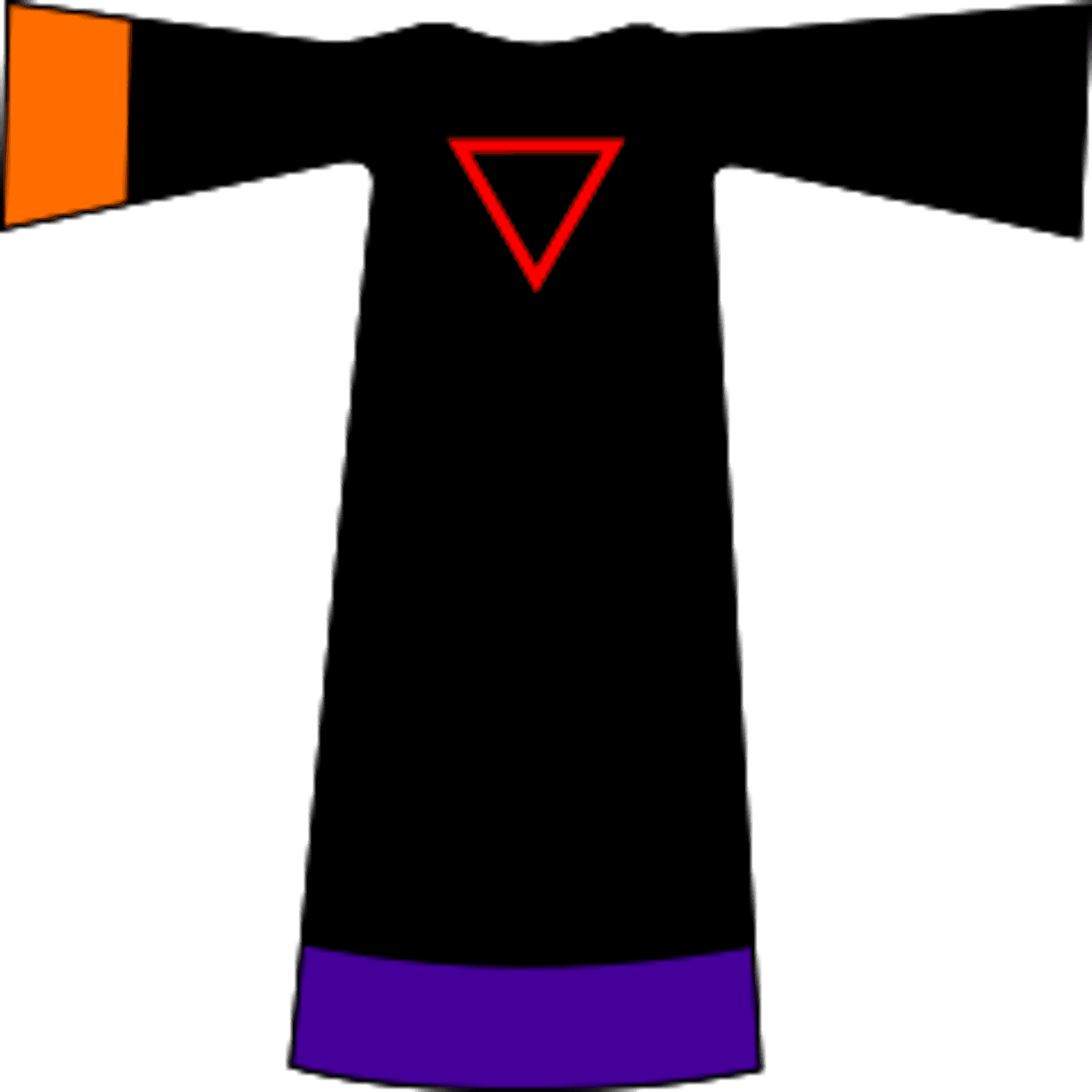 | 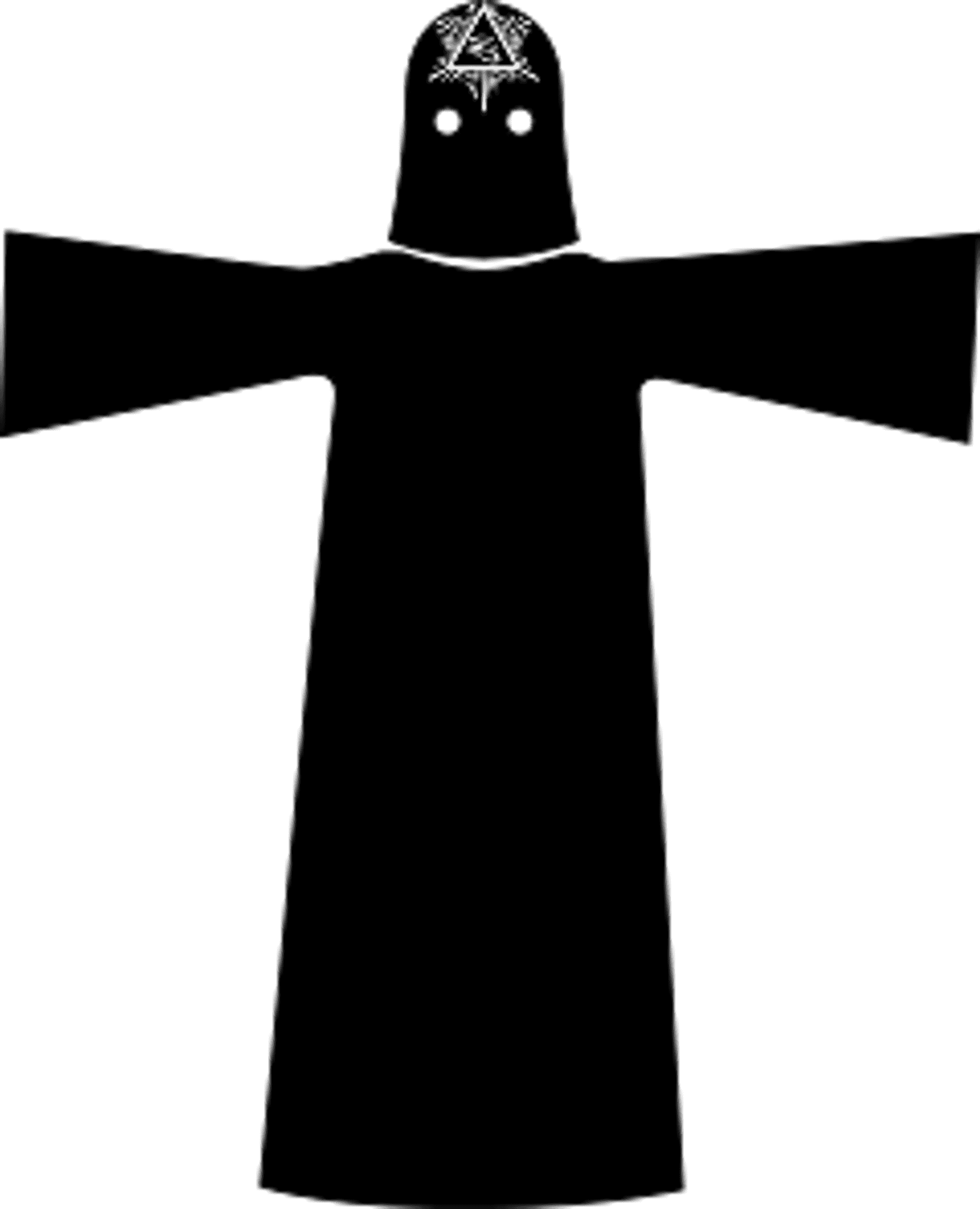 | 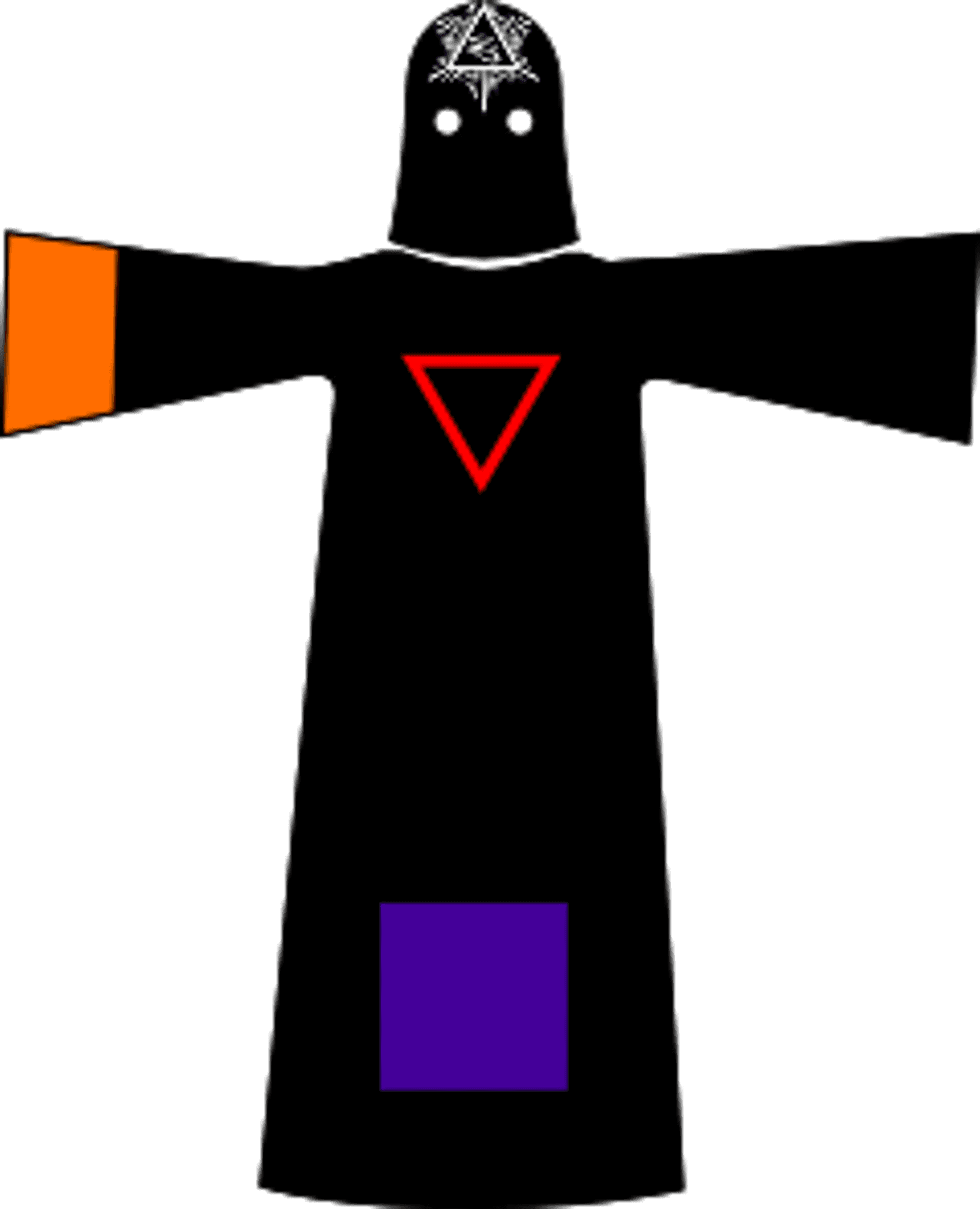 |
| Adds orange sash to the right arm | Adds silver hexagram of 48 rays around the triangle in the hood | Adds orange sash to the right arm |
| Crowley/Regardie hood: | Outer College hood: |
|---|---|
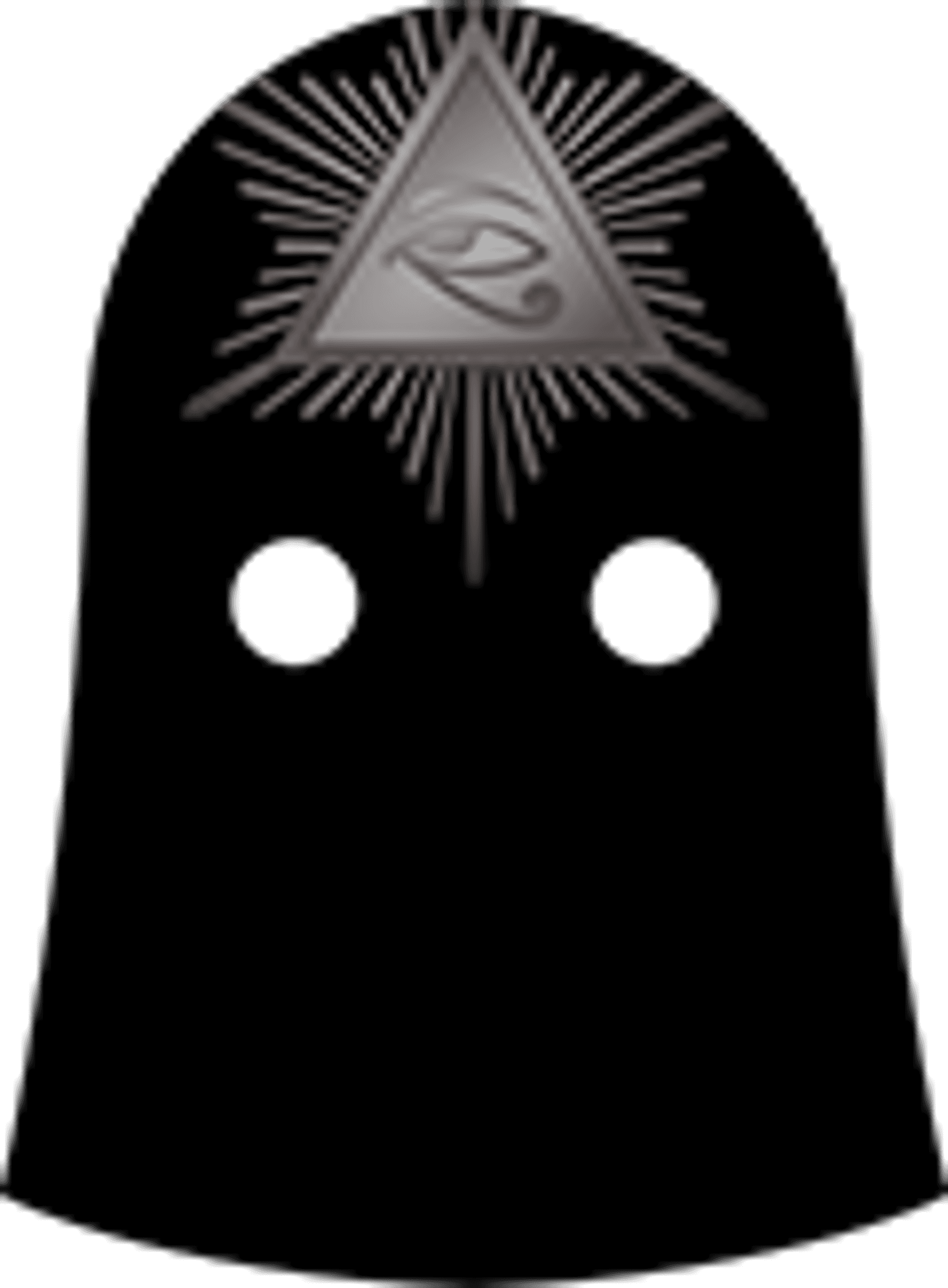 |  |
Here we can see a person wearing a possible Practicus robe in the Rite of Luna:
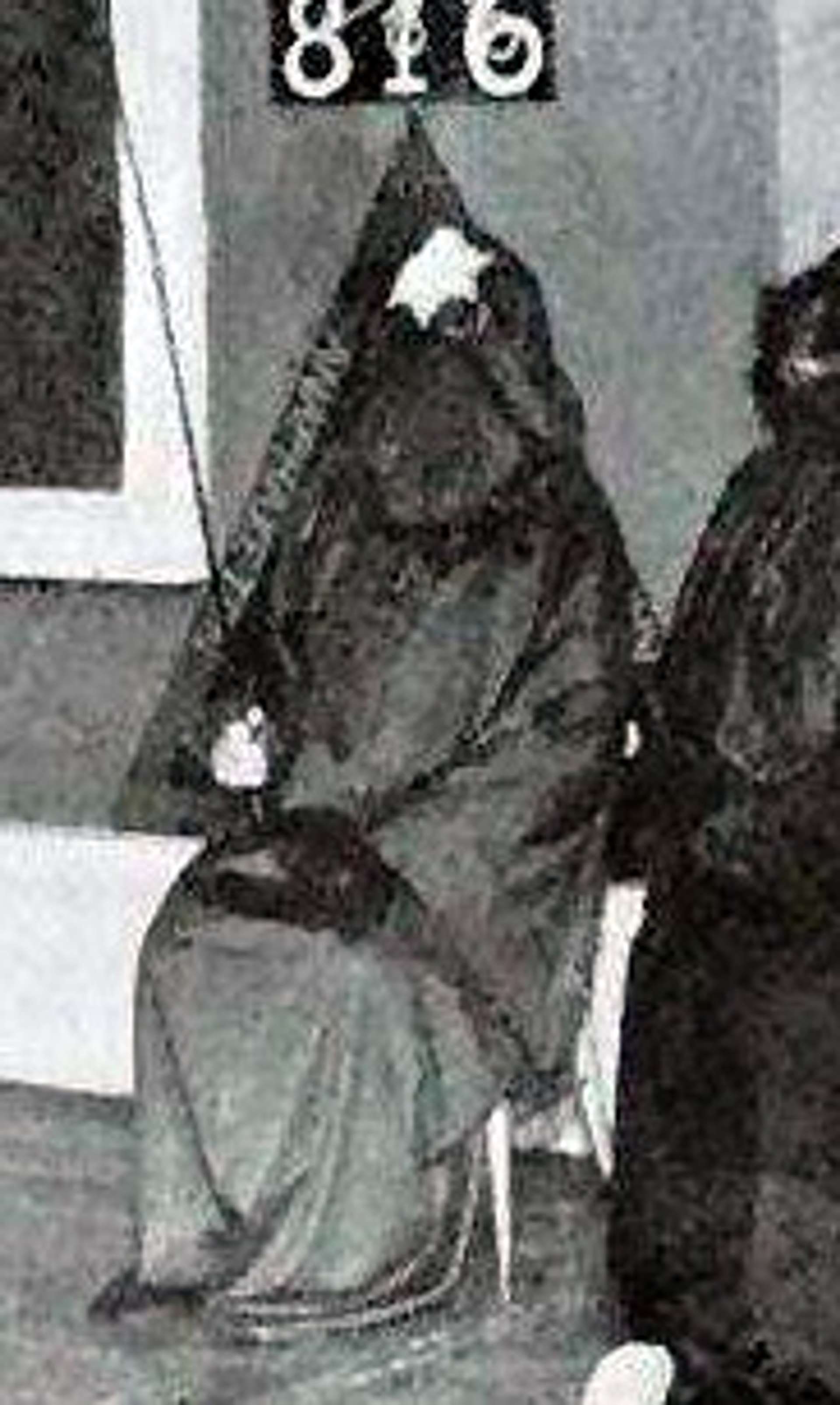
Philosophus 4○=7□ #
[No.] 5. PHILOSOPHUS [Symbol added to No.] 4[£] 1 0 0
The Philosophus’ robe is fitted for all rituals involving O O, and for the rites of Venus. In the former case an Uraeus crown and azure nemmes, in the latter a green nemmes, should be worn. (William Northam’s ad in The Equinox)
4=7 Add Calvary cross to breast. (Regardie’s note)
Let him cause the necessary addition to be made to his Practicus’ robe. (Liber Collegii Sancti)
| Crowley/Fuller: | Crowley/Regardie: | Outer College: |
|---|---|---|
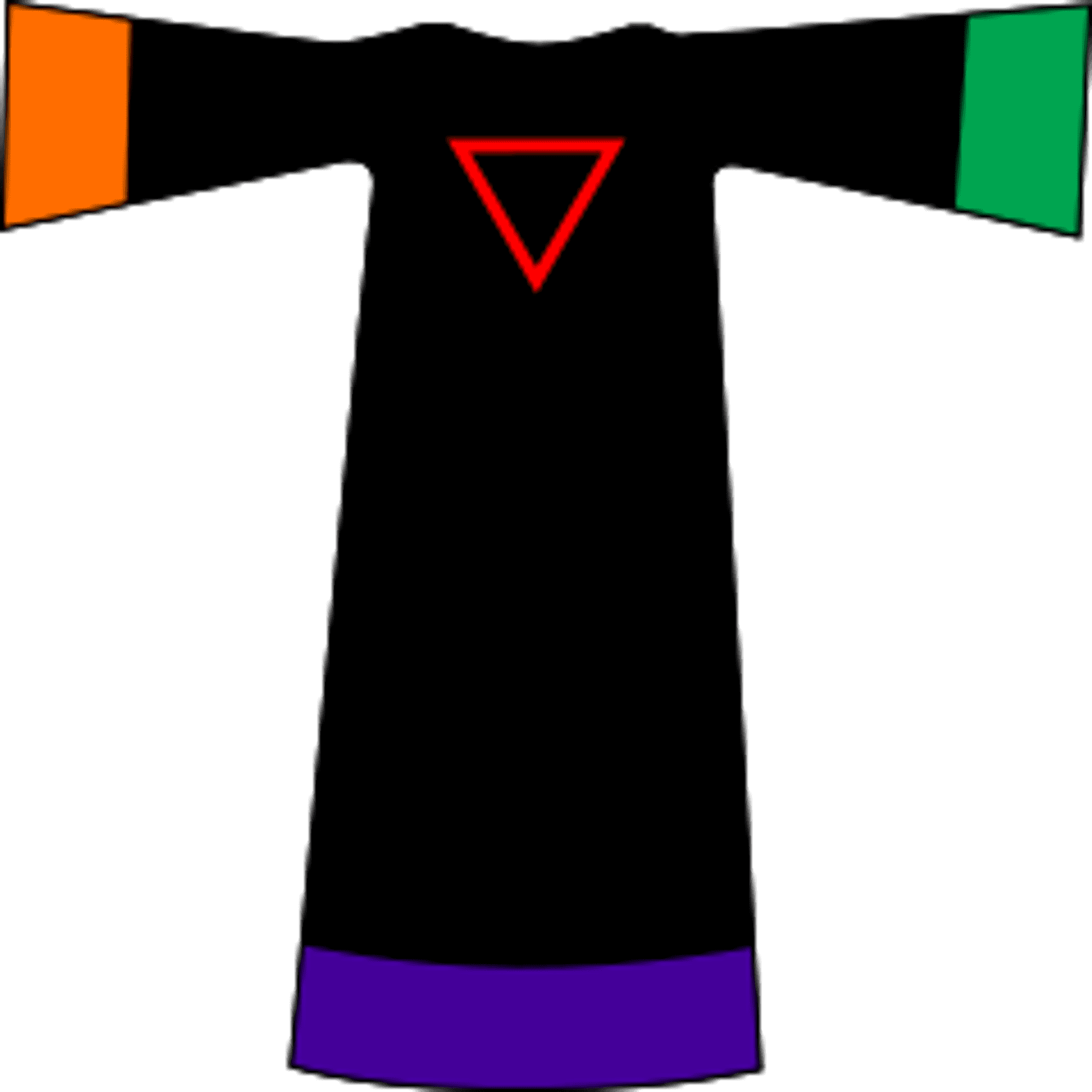 | 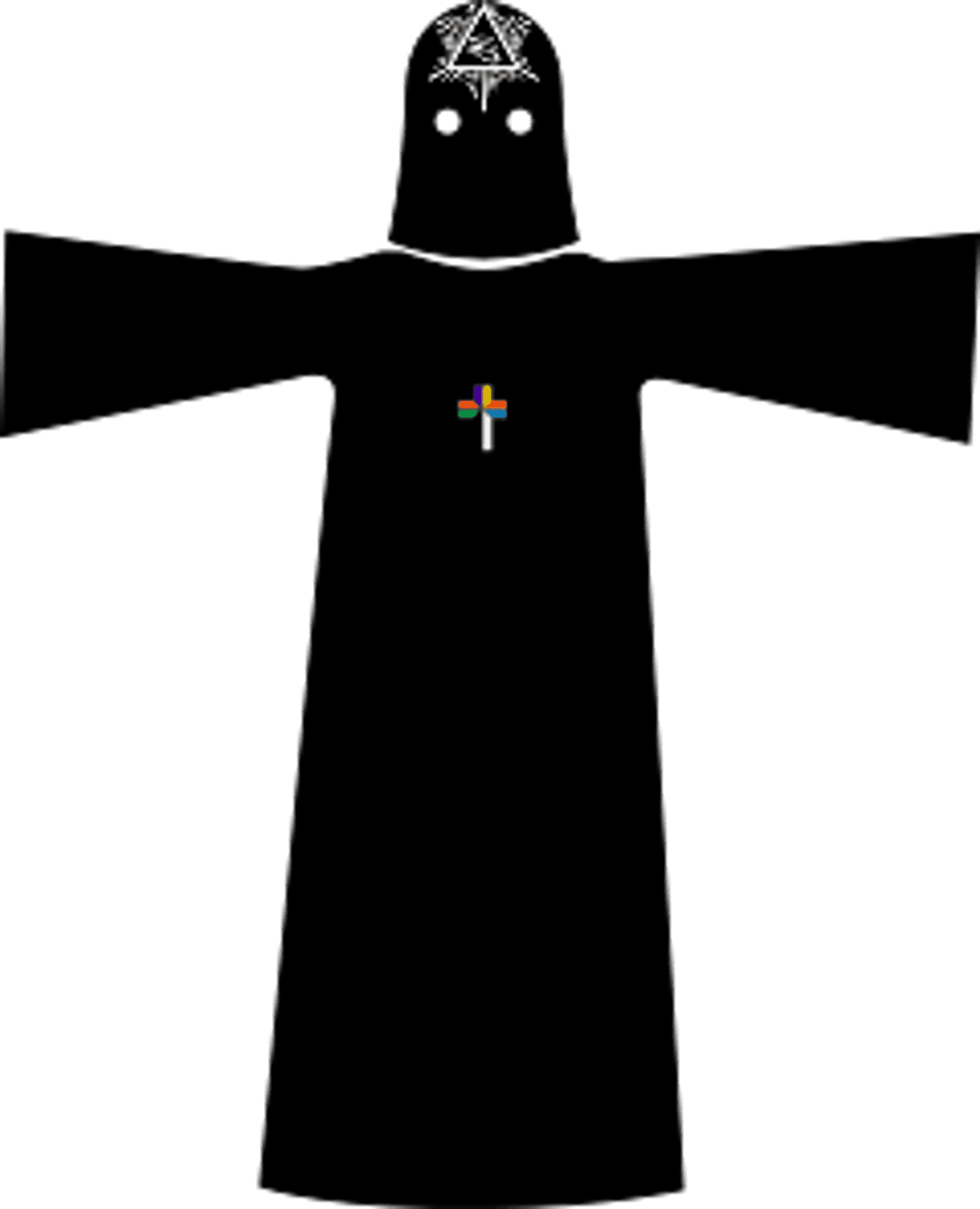 |  |
| Adds green sash to the left arm | Adds calvary cross to the breast | Adds green sash to the left arm |
According to James Eshelman, these are the colors of the calvary cross:

However, according to the explanation given by Walters and Davis, Eshelman’s colors should look different in the black and white photographies. For example, on the top side, the violet should appear very bright, and the yellow dark. Also, the black itself does not look dark enough.
| From Crowley’s photo: | From Laylah’s photo a: | From Layla’s photo b: |
|---|---|---|
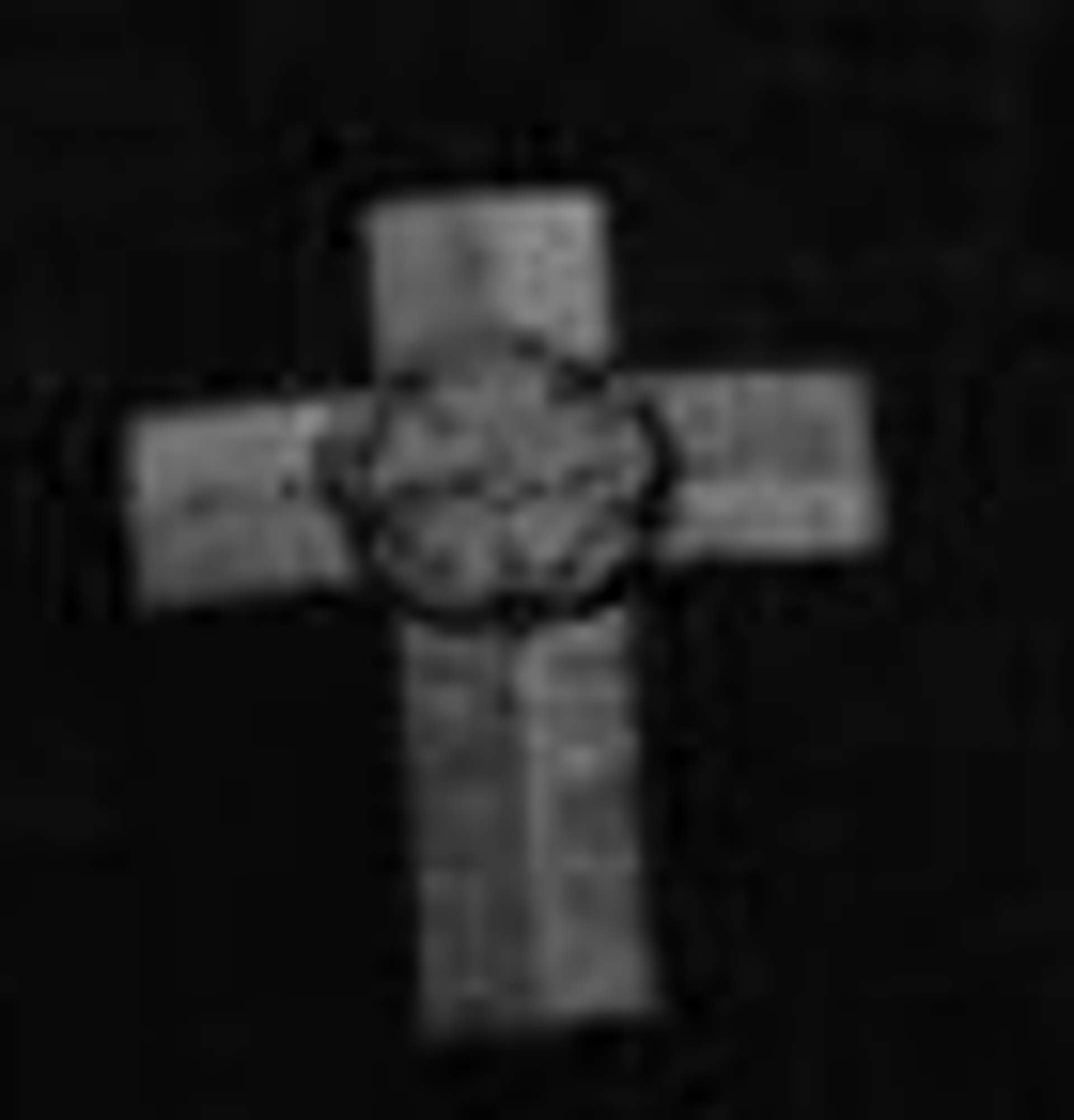 | 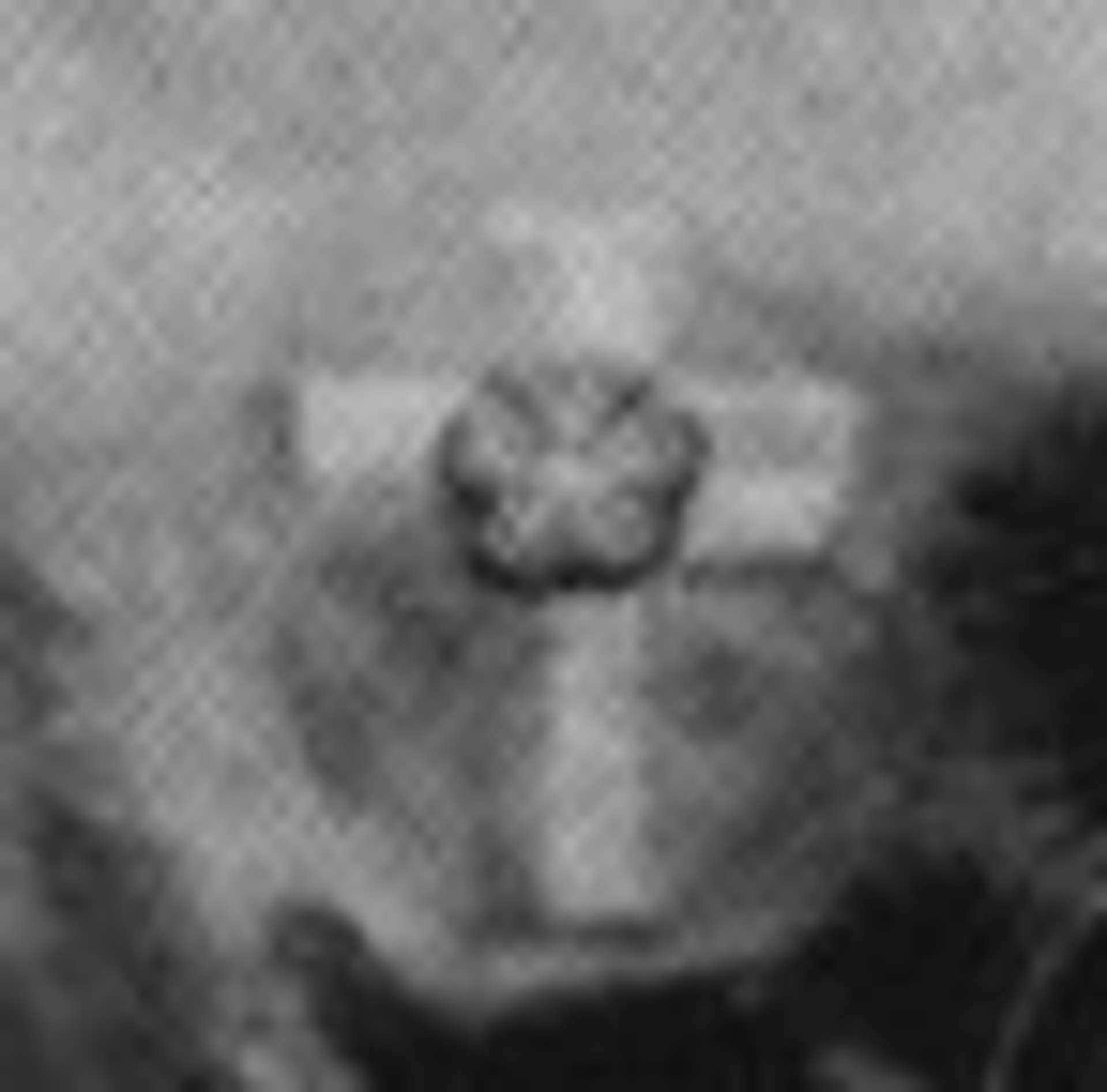 | 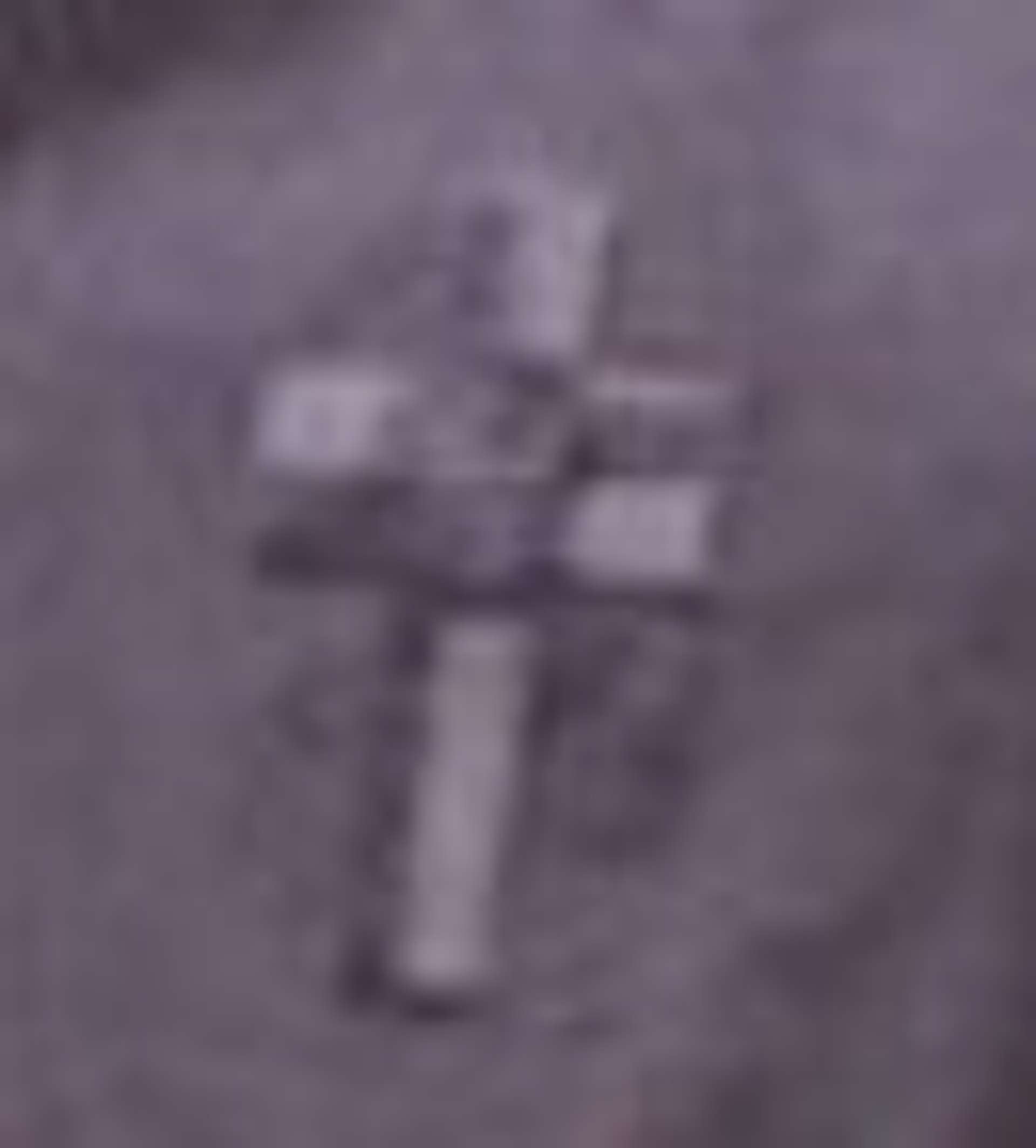 |
Of course, we must also note that in the R.C. robes the color of the cross is uniform.
Dominus Liminis #
[No.] 6. DOMINUS LIMINIS [Symbol added to No.] 5[£] 1 0 0
The Dominus Liminis’ robe is fitted for the infernal rites of Sol, which must never be celebrated. (William Northam’s ad in The Equinox)
D.L. Add 5-petalled rose to center of cross. (Regardie’s note)
Let him cause the necessary addition to be made to his Philosophus’ robe. (Liber Collegii Sancti)
| Crowley/Fuller: | Crowley/Regardie: | Outer College: |
|---|---|---|
 | 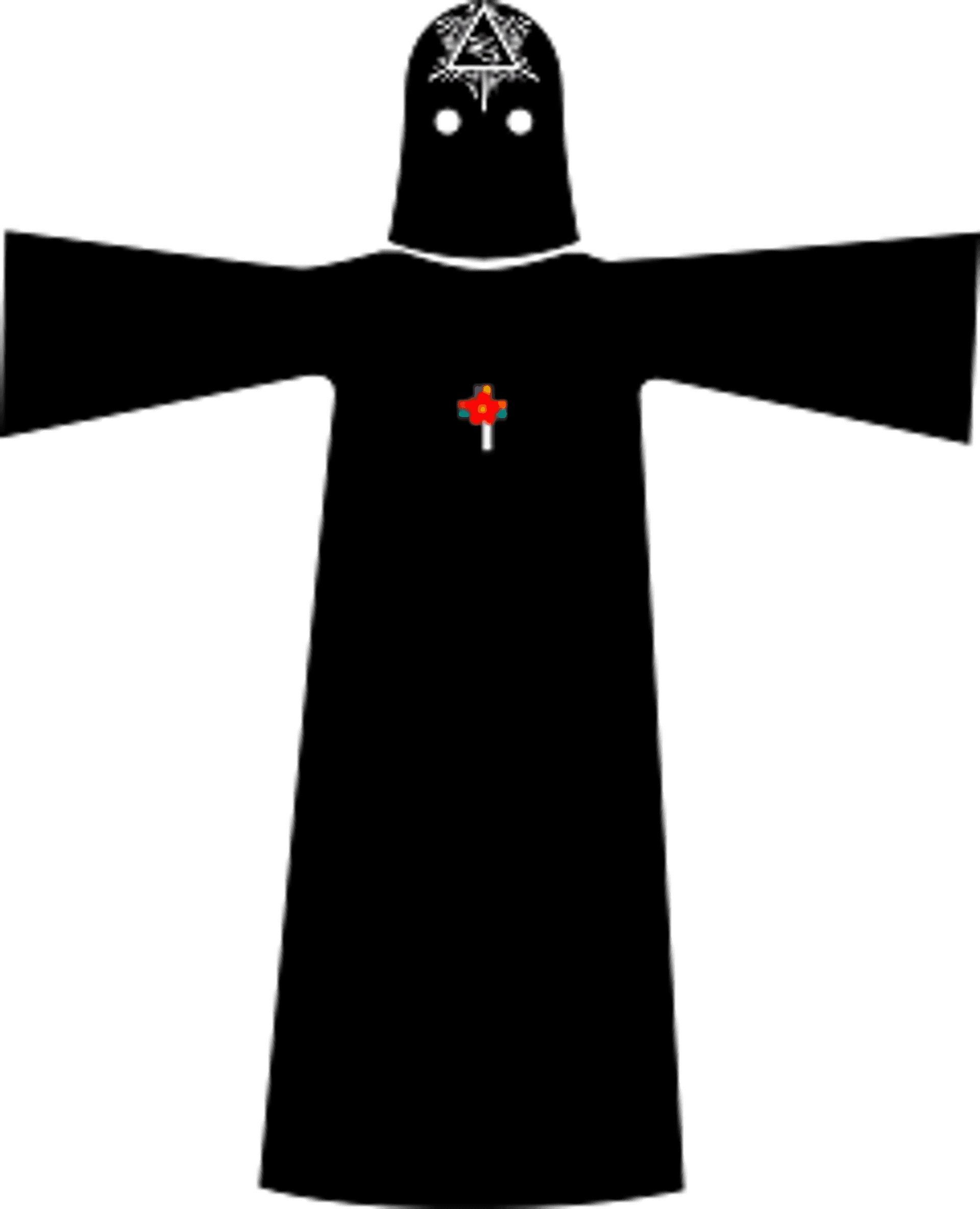 |  |
| (Crowley / Fuller) | (Crowley / Regardie) | (Outer College) |
| Adds a white hood with three blue Neteru on the mouth | Adds five-petaled rose to the center of the cross in the breast | Replaces the hood with a white hood with three blue Neteru on the mouth |
| Crowley/Regardie hood: | Outer College hood: |
|---|---|
 |  |
| (Crowley / Fuller hood) | (Outer College hood) |
This is the calvary cross with the five-petaled rose:

Note that the design in the calvary crosses photos shown above is slightly different. One of them seems to have a dark border aroundn the rose.
Laylah wearing a full Dominus Liminis robe according to Crowley / Regardie design (the hood is folded in as a hat):
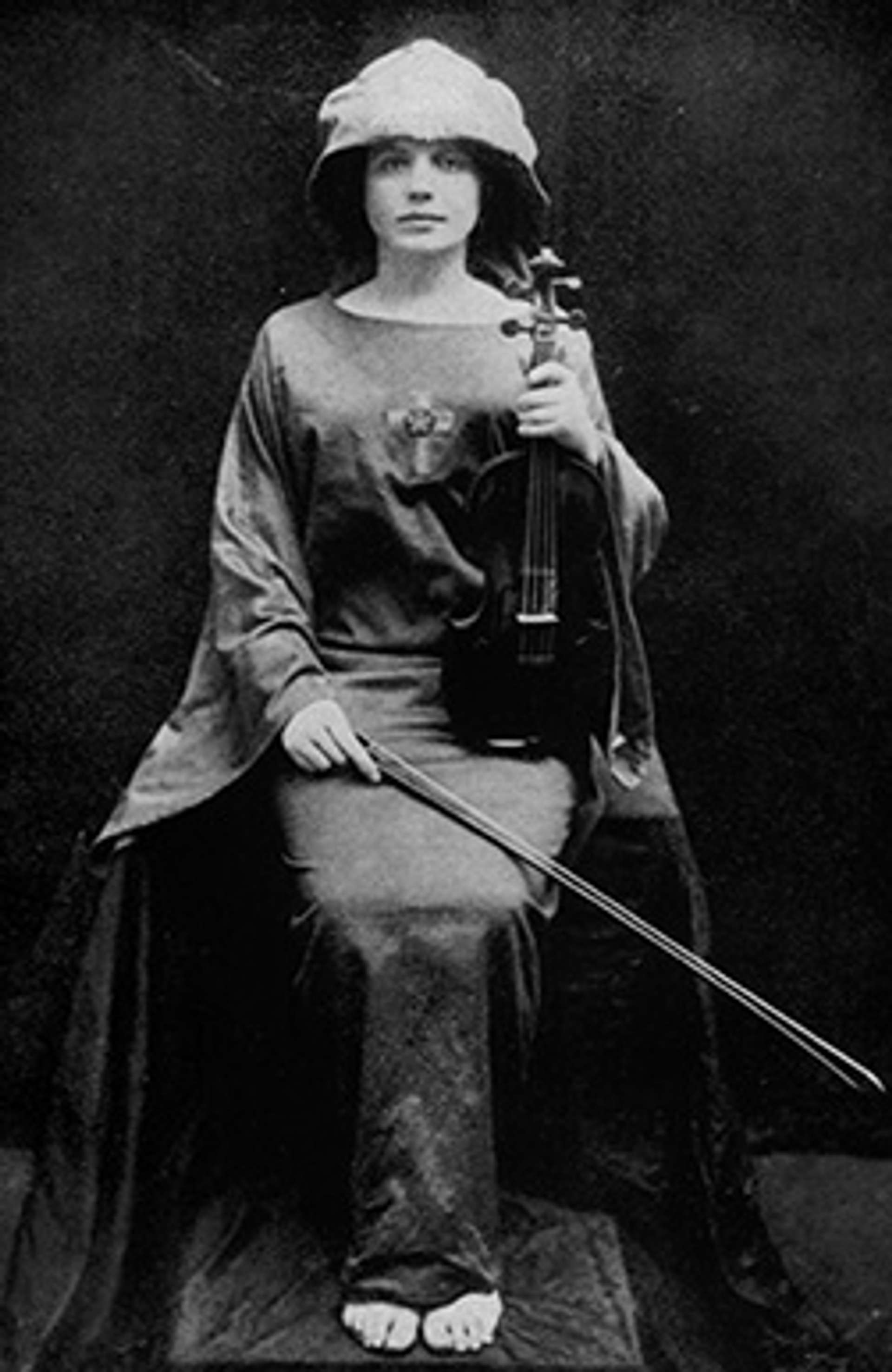
Adeptus Minor (without) 5○=6□ #
[No.] 7. ADEPTUS (without) [Symbol added to No.] 0 or 1[£] 3 0 0
The Adeptus Minor’s robe is fitted for the rituals of Sol. A golden nemmes may be worn. (William Northam’s ad in The Equinox)
5=6 (without) Same as Probationer, add symbol (Regardie’s note)
In the Outer College A∴A∴ claimant group, the symbol added to the robe of the Adeptus Minor (without) 5○=6□ is a red Eye of Horus to the center of the Pentagram:
| Outer College, front: | Outer College, back: |
|---|---|
 |  |
Adeptus Minor (within) 5○=6□ #
[No.] 8. ADEPTUS (within) [£]10 0 0
The Adeptus’ robe is fitted for the particular workings of the Adeptus, and for the Postulant at the First Gate of the City of the Pyramids. (William Northam’s ad in The Equinox)
5=6 (within) White robe, with D.L. insignia (Regardie’s note)
The robe of the full Adeptus Minor is […] is a white robe, edged with gold at the cuffs, hem, and collar. Upon the breast is a six-squared cross of gold united with a five-petaled ruby rose. […] According to one minor source, this robe is yellow rather than white, all other details being exactly as given above. However, the description given here concurs with that, conveyed to me verbally by Israel Regardie of an A∴A∴ Adeptus robe he personally saw C. S. Jones (Frater Achad) wear. (James Eshelman)
In the Outer College A∴A∴ claimant group, the robe of the Adeptus Minor (within) 5○=6□ is golden, with a Golden hood.
| Charles Stansfeld Jones: | Minor source: | Outer College: |
|---|---|---|
 | 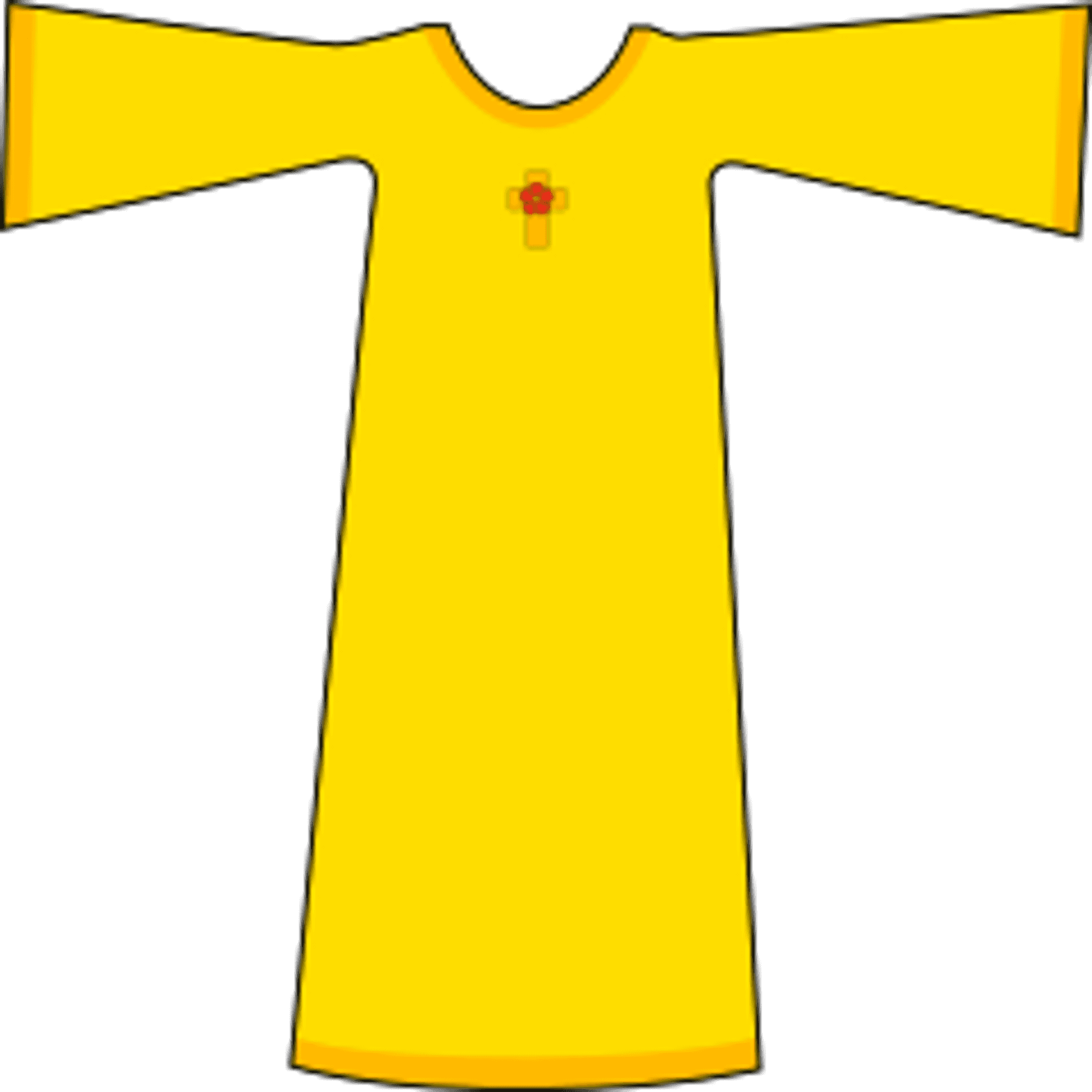 | 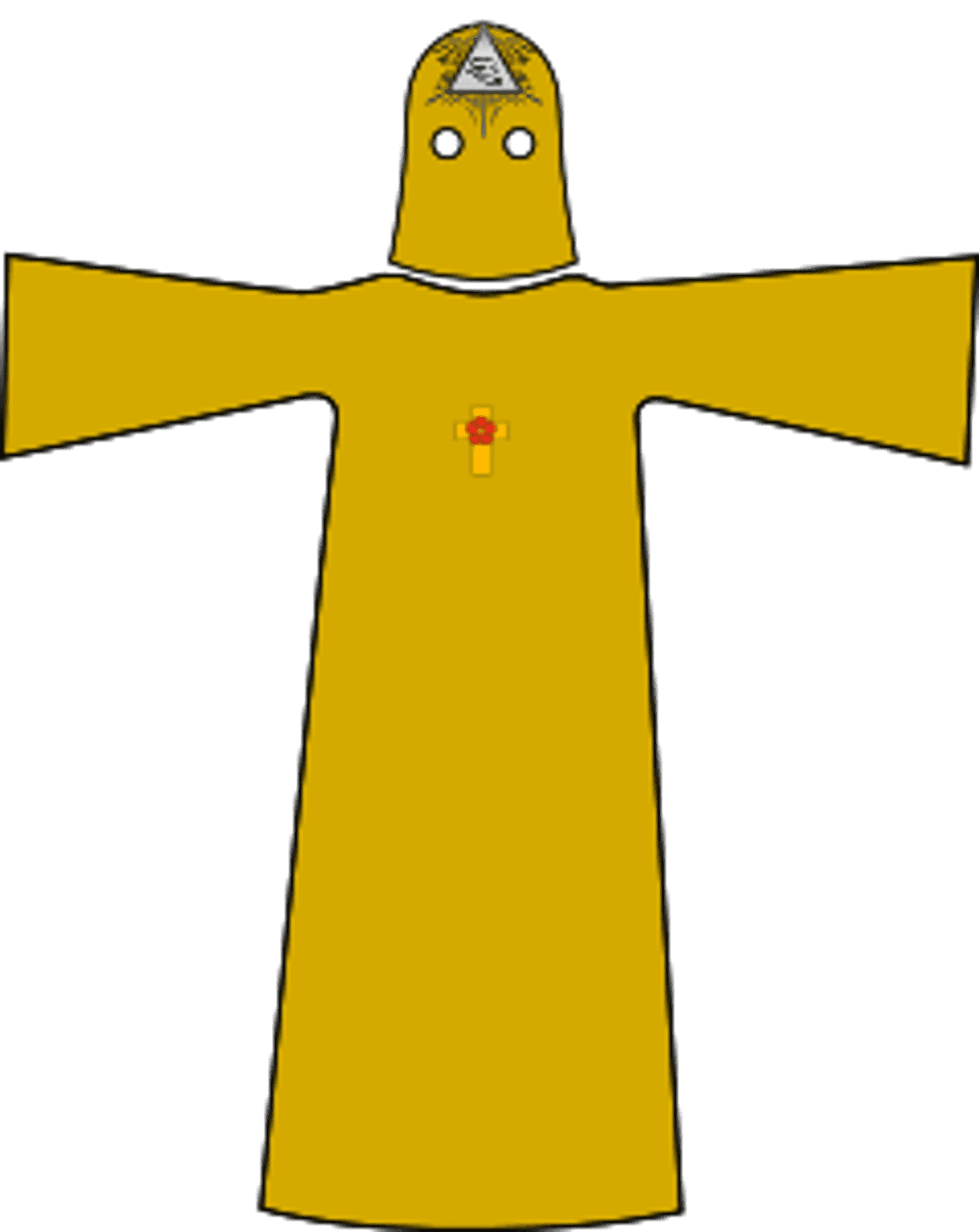 |
This is the golden cross with the five-petaled rose:

Adeptus Major 6○=5□ #
[No.] 9. ADEPTUS MAJOR [£]10 0 0
The Adeptus Major’s robe is fitted for the Chief Magus in all Rituals and Evocations of the Inferiors, for the performance of the rites of Mars, and for the Postulant at the Second Gate of the City of the Pyramids. (William Northam’s ad in The Equinox)
6=5 As for 5=6 but red (Regardie’s note)
According to Magical Link, Spring/Fall, 1998, Crowley’s Adeptus Major 6○=5□ robe still survives. According to non-released R.C. robes illustrations from the same artist who drawn the pictures in Liber Vesta, and the old photos of the Rites of Eleusis (where we can see different shades of robes), it is possible that this was the early design of the robe. The main difference here is the hood:
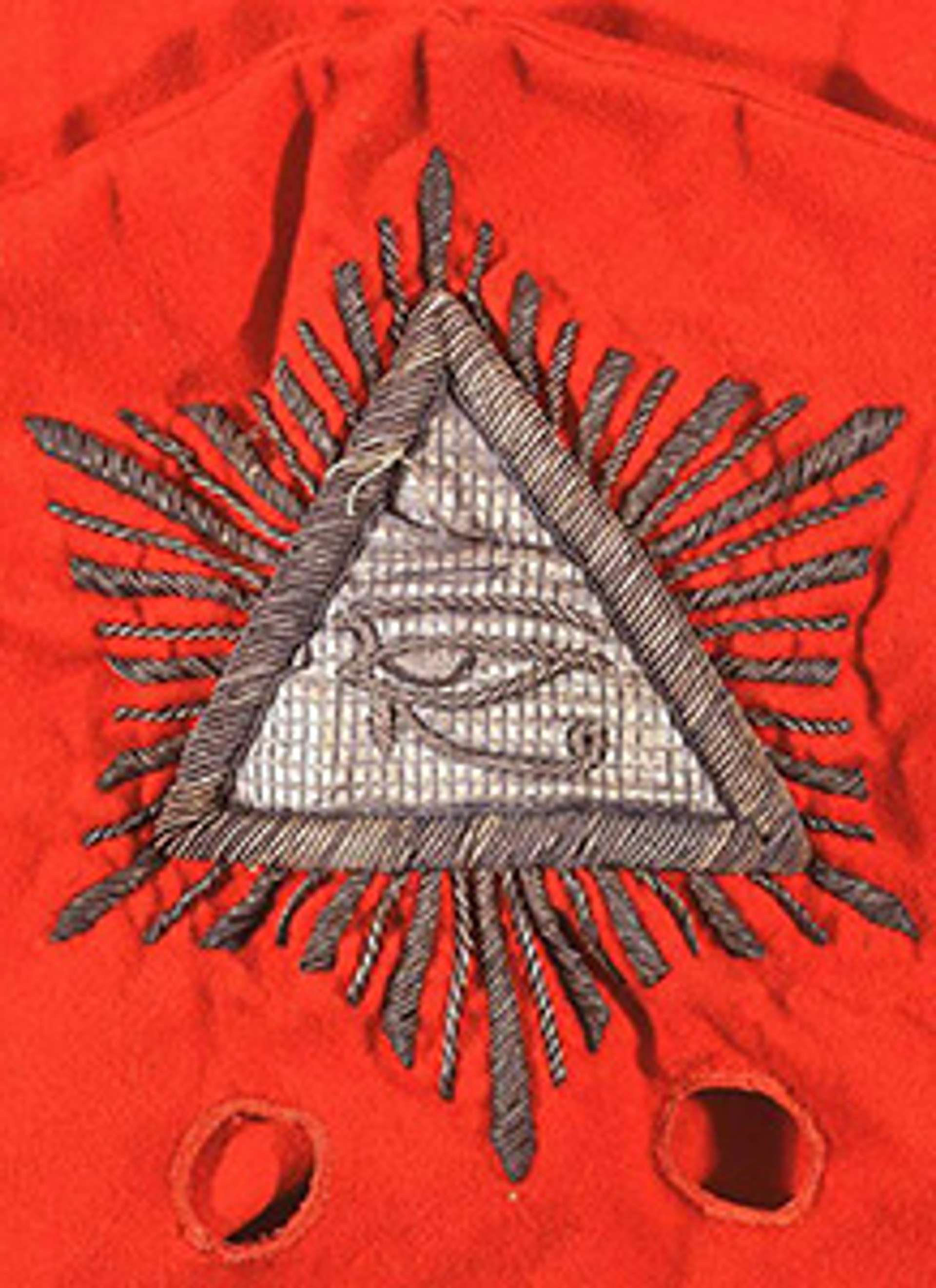
| Crowley/Regardie: | Outer College: |
|---|---|
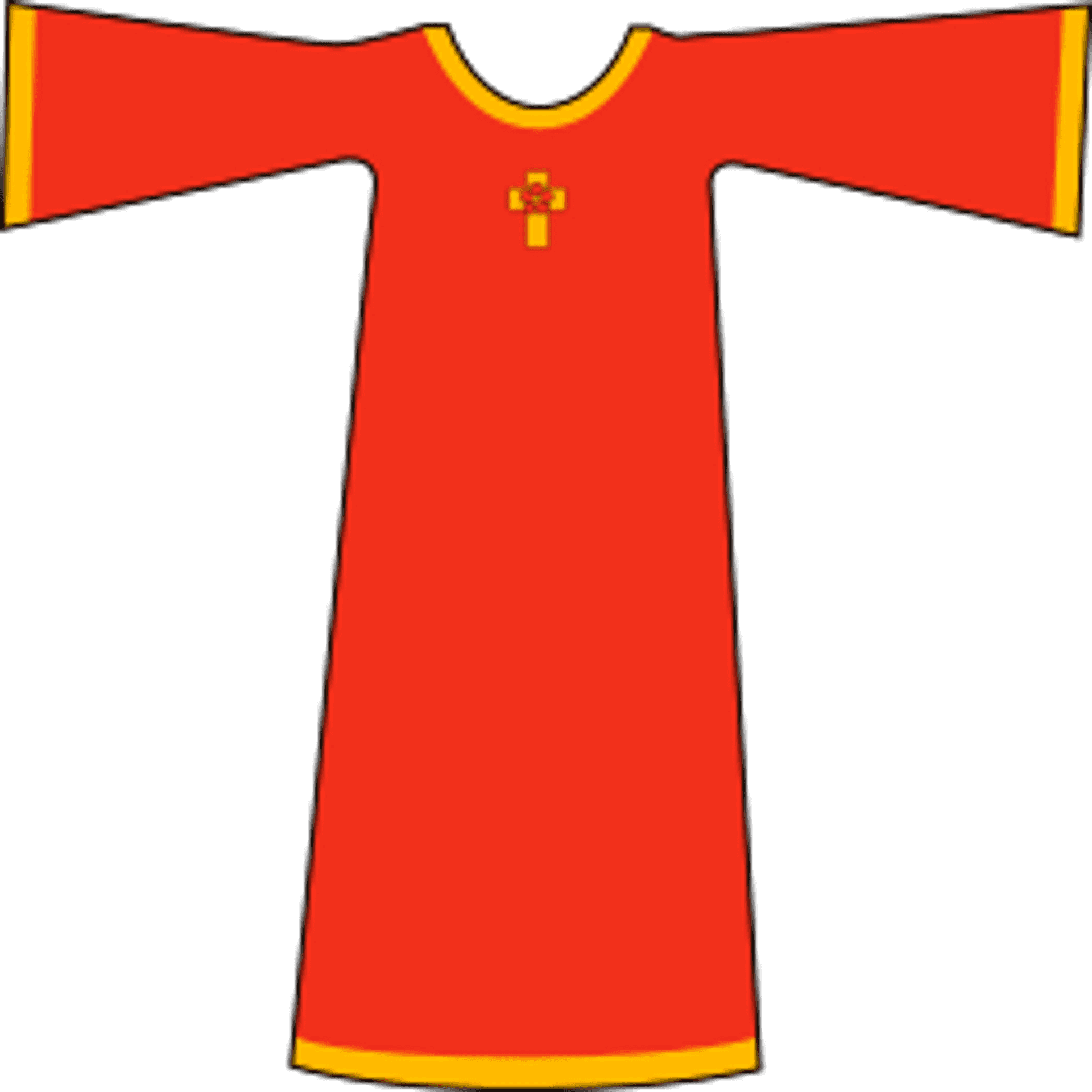 |  |
Adeptus Exemptus 7○=4□ #
[No.] 10. ADEPTUS EXEMPTUS [£]10 0 0
The Adeptus Exemptus’ robe is fitted for the Chief Magus in all Rituals and Invocations of the Superiors, for the performance of the rites of Jupiter, and for the Postulant at the Third Gate of the City of the Pyramids. (William Northam’s ad in The Equinox)
7=4 As for 5=6 but violet (Regardie’s note)
“The Jupiter robe, 7○=4□ A∴A∴, had a hood which could be pulled over the face, and this had holes for the eyes to look through. He some times wore this with the hood always thrown back, however.” (letter from Jane Wolfe to Karl Germer, Dec. 27, 1949)
Crowley / Regardie’s design reminds of the robe weared by Frater Progradior in the painting seen above, in the Neophyte section.
| Crowley/Regardie: | Outer College: |
|---|---|
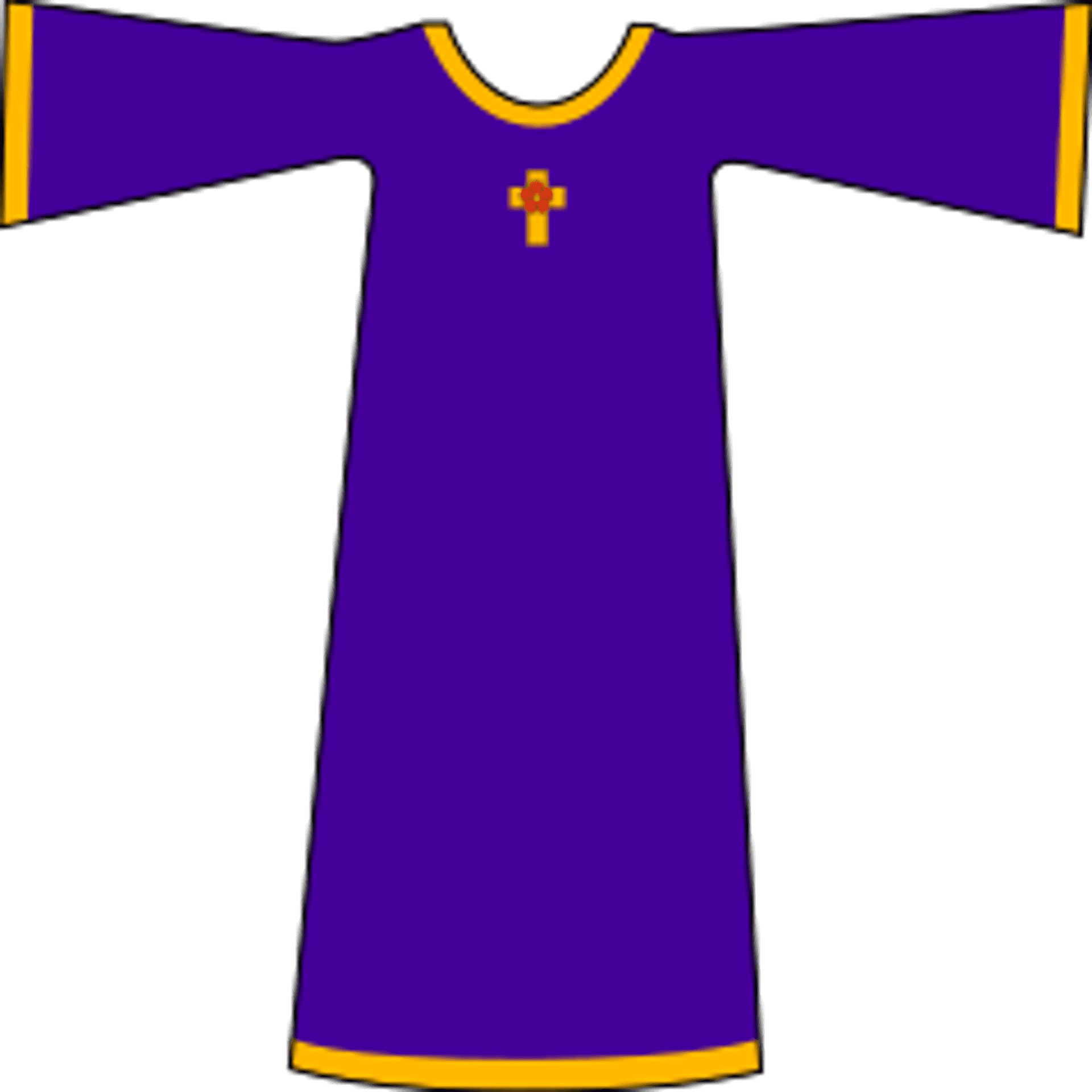 |  |
Babe of the Abyss #
The Babe of the Abyss has no robe. (William Northam’s ad in The Equinox)
Magister Templi 8○=3□ #
[No.] 11. MAGISTER TEMPLI [£]50 0 0
For the performance of the rites of Saturn, the Magician may wear a black robe, close-cut, with narrow sleeves, trimmed with white, and the Seal and Square of Saturn marked on breast and back. A conical black cap embroidered with the Sigils of Saturn should be worn.
The Magister Templi robe is fitted for the great Meditations, for the supernal rites of Luna, and for those rites of Babylon and the Graal. But this robe should be worn by no man, because of that which is written: “Ecclesia abhorret a sanguine.” (William Northam’s ad in The Equinox)
No claimant group describes this robe, but based on its price, and the following description, perhaps this is the proper design:
The general symbolism which we have adopted leads us, however, to prefer the description of a Robe which few dare wear. This Robe is of a rich silk of deep pure blue, the blue of the night sky: it is embroidered with golden stars, and with roses and lilies. Around the hem, its tail in its mouth, is the great serpent, while upon the front from neck to hem falls the Arrow described in the Vision of the Fifth Aethyr. This Robe is lined with purple silk on which is embroidered a green serpent coiled from neck to hem. The symbolism of this Robe treats of high mysteries which must be studied in Liber CCXX and Liber CDXVIII; but having thus dealt with special Robes, let us consider the use of the Robe in general. (Liber ABA, Part II, Chapter XII)
In the Outer College A∴A∴ claimant group, the robe of the Magister Templi 8○=3□ follows the later design. The following drawing is not based on the actual robe, but a rendition of the account given above:
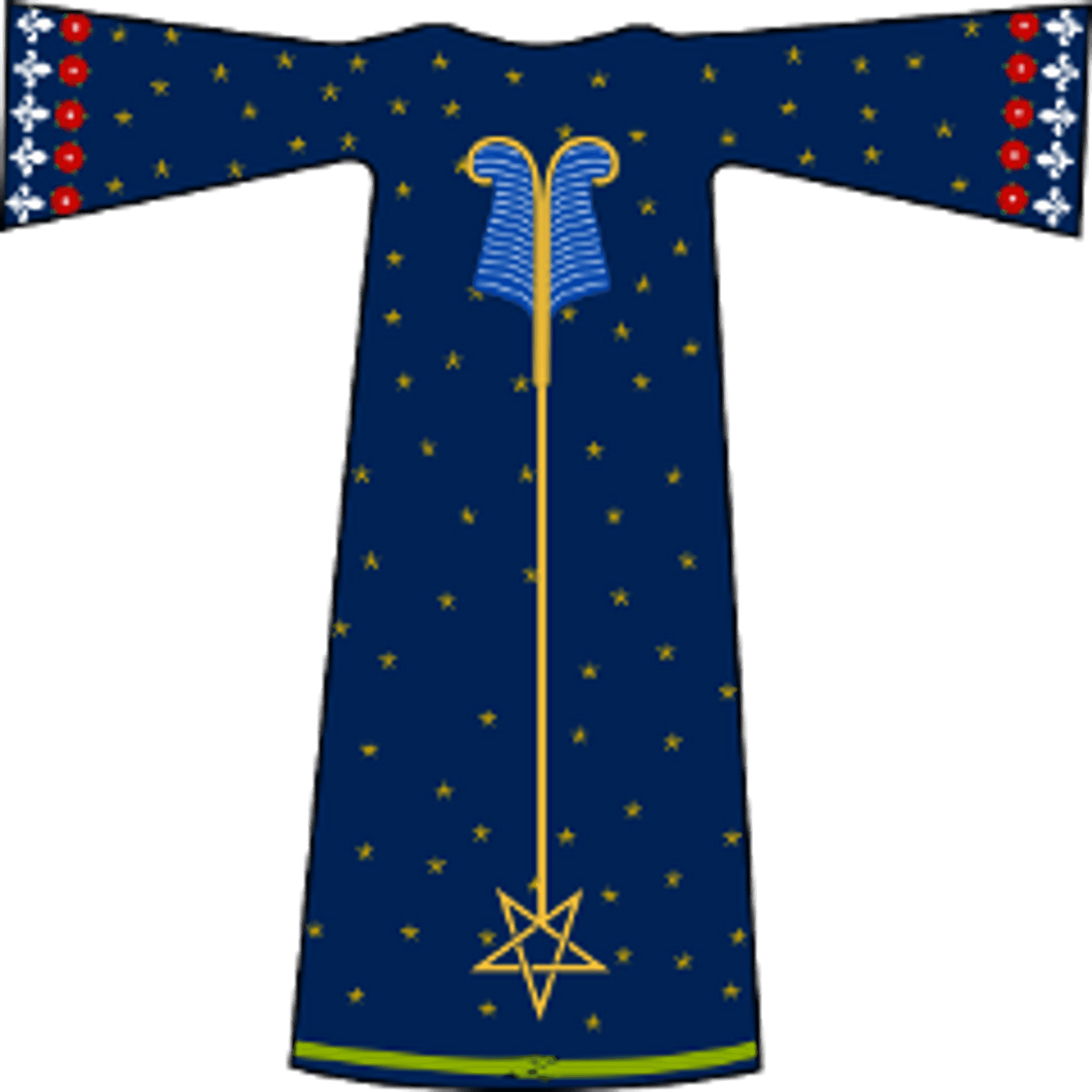
(Outer College robe)
Love is the law, love under will.
References #
- CROWLEY, Aleister. The Book of Lies. Samuel Weiser, 1997.
- CROWLEY, Aleister; et al. Commentaries on the Holy Books and Other Papers. Red Wheel/Weiser, 1998.
- CROWLEY, Aleister. Liber Collegii Sancti. Privately printed, 1910.
- CROWLEY, Aleister; et al. Magick: Liber ABA, Book 4. Red Wheel Weiser Conari; 2nd Revised Edition, 1998.
- CROWLEY, Aleister. Moonchild. The Mandrake Press, 1929.
- CROWLEY, Aleister; et al. William Northam Robemaker, in The Equinox Volume I Number X. London: Wieland & Co., 1913.
- ESHELMAN, James A. The Mystical and Magical System of the A∴A∴. College of Thelema: First Hardcover Edition, 2008.
- FULLER, Jean Overton. The Magical Dilemma of Victor Neuburg.
- GERMER, Karl. Sellected Letters: 1928-1962.
- GUNTHER, J. Daniel. The Angel & The Abyss: The Inward Journey, Books II & III. Ibis Press, 2014, pp. 367-370.
- RICHMOND, Keith. Progradior and the Beast. Neptune Press, 2004.
- WALTERS, Francis Marion; DAVIS, Raymond. Studies in Color Sensitive Photographic Plates and Methods of Sensitizing by Bathing. Scientific Papers of the Bureau of Standards, Vol. 17, 1921.
Thanks for reading
Since you've made it this far, sharing this article on your favorite social media network would be highly appreciated 💖! For feedback, please write to alanwillms at gmail dot com.